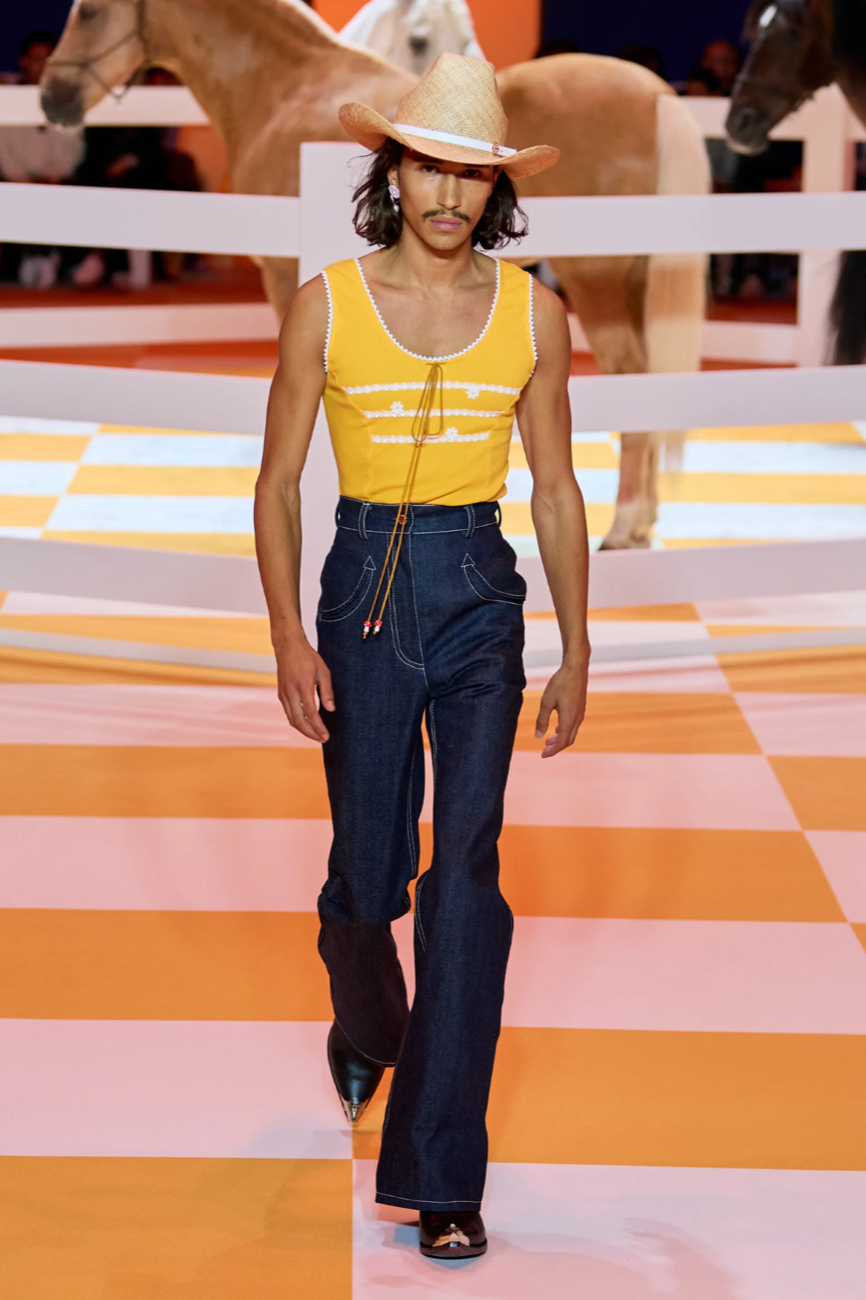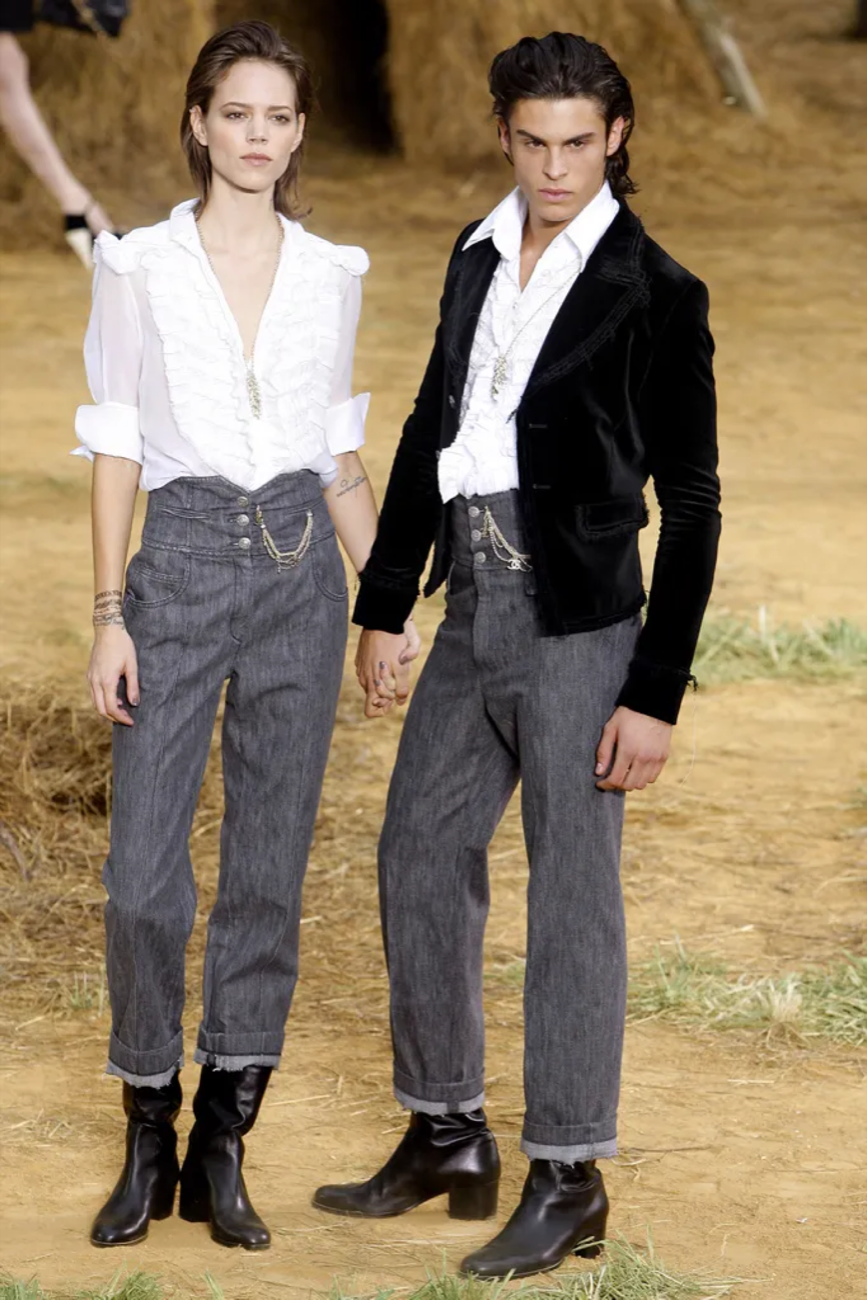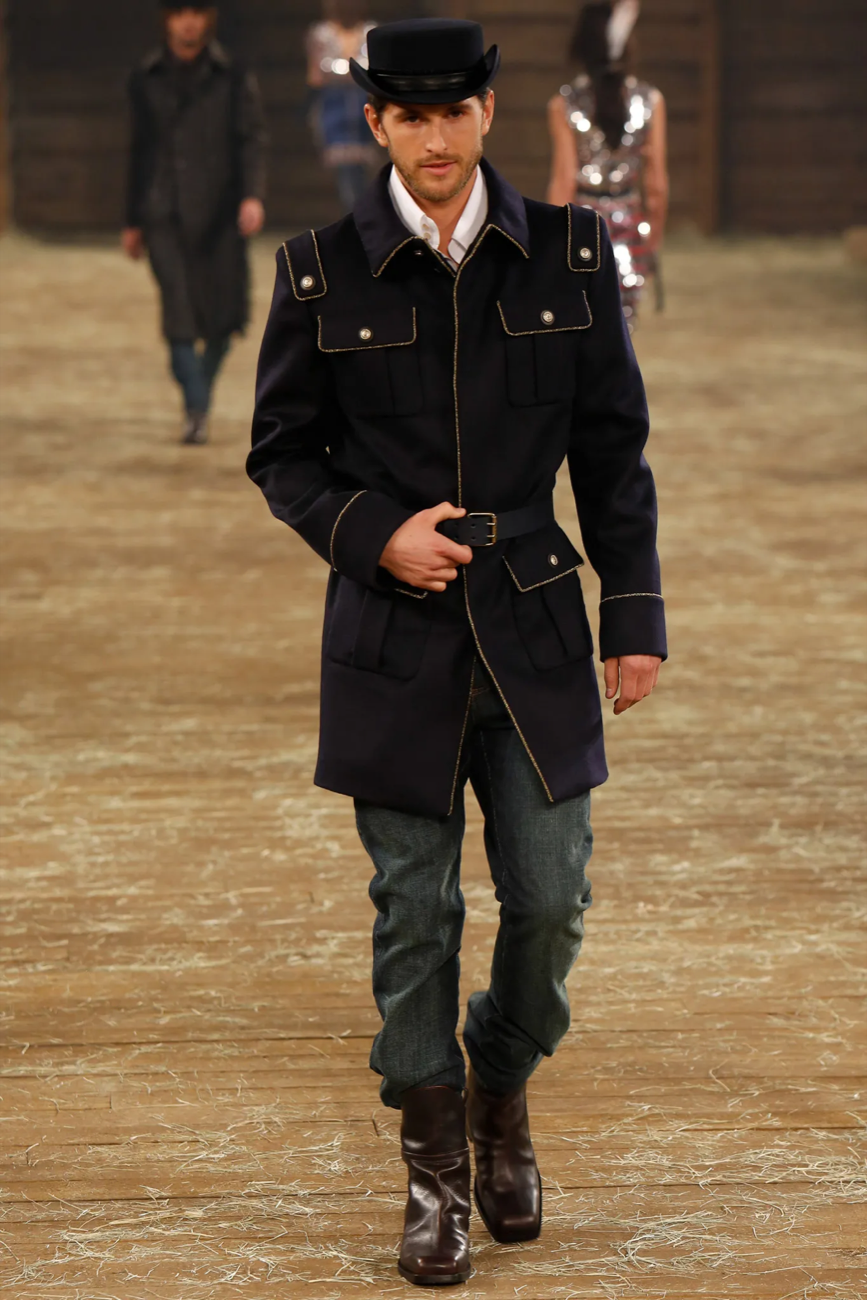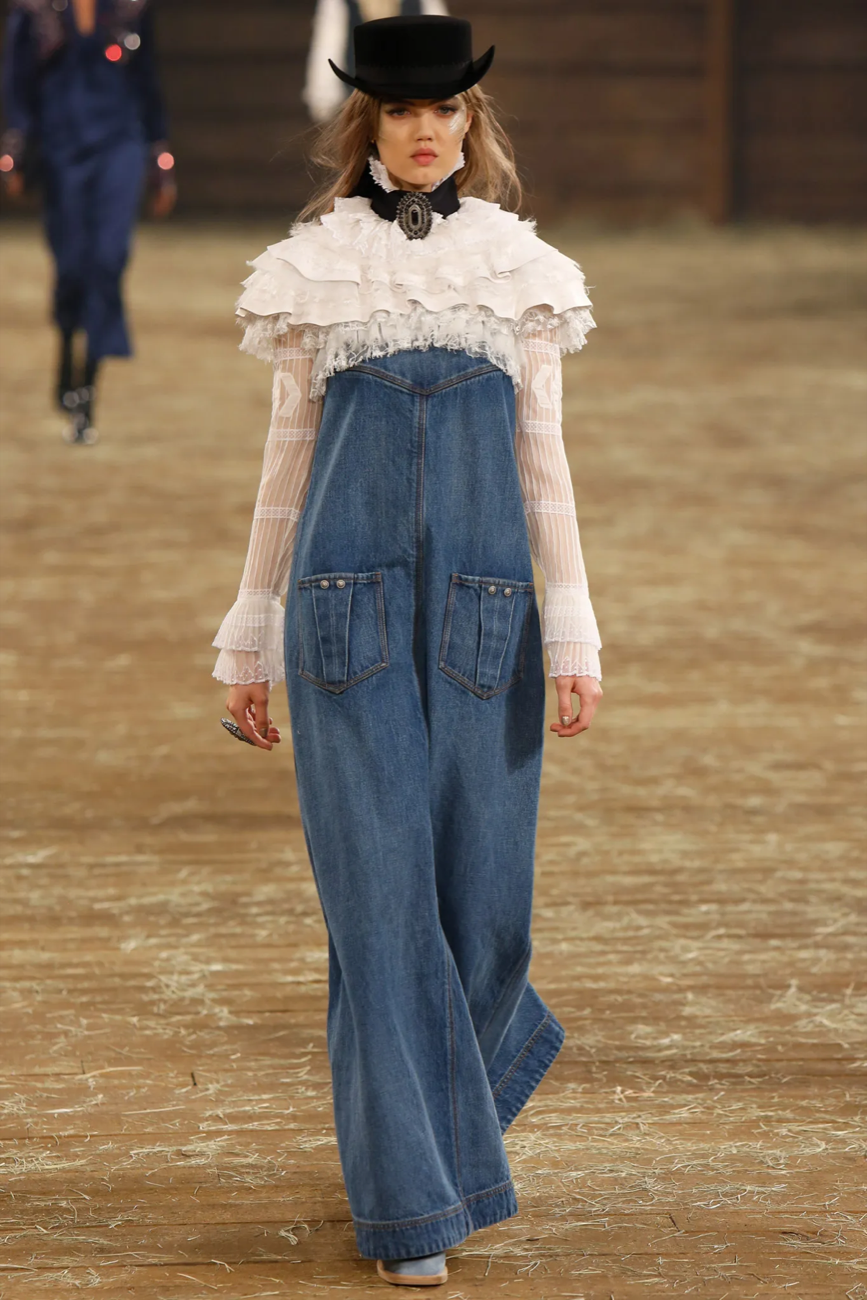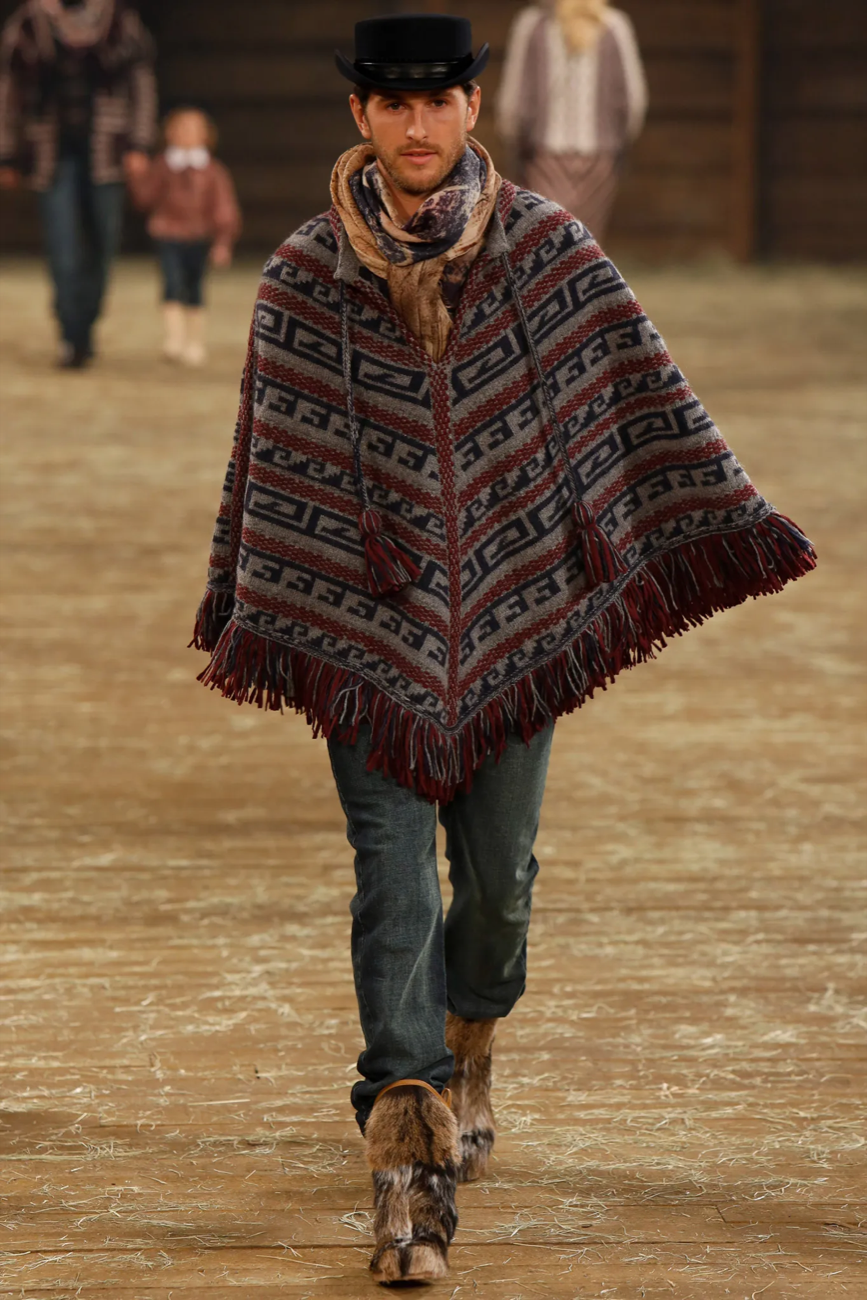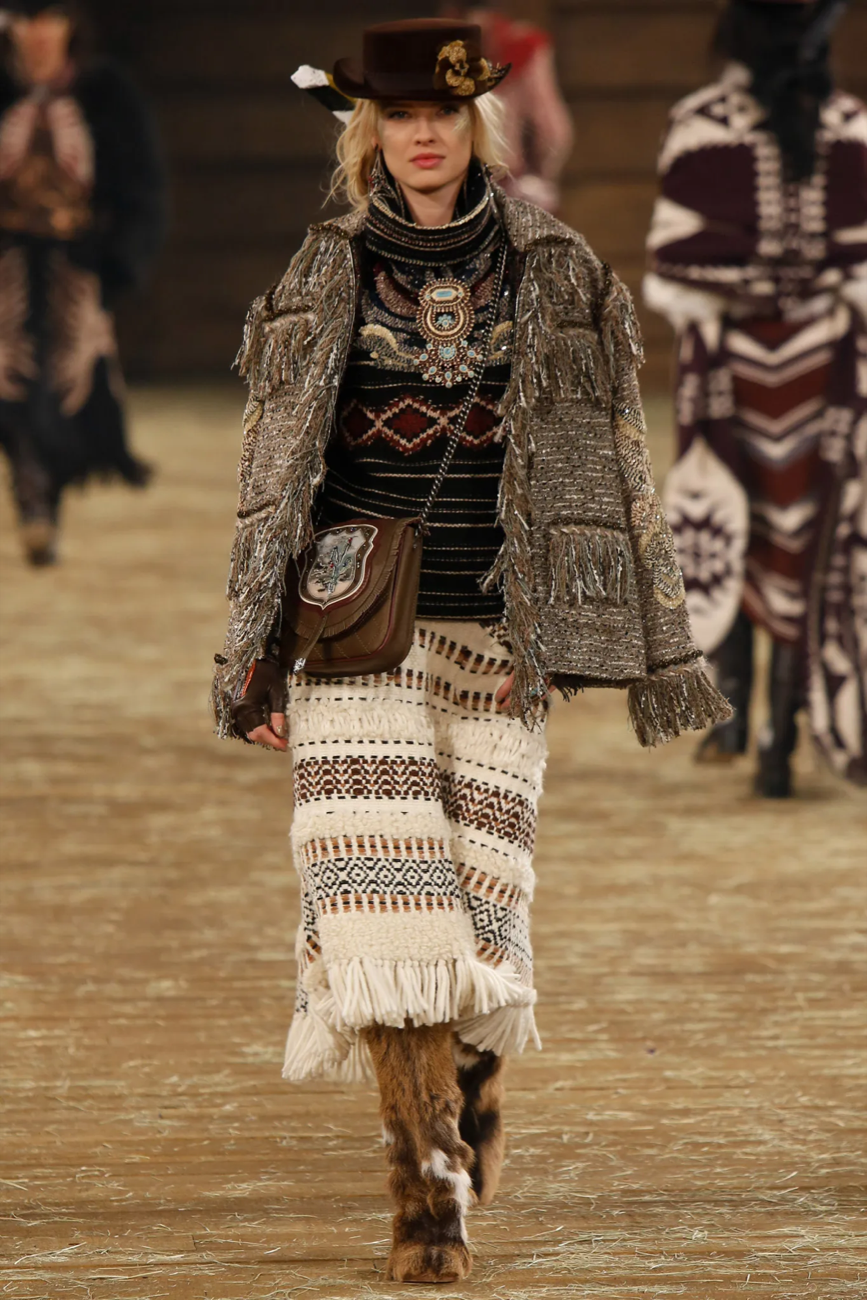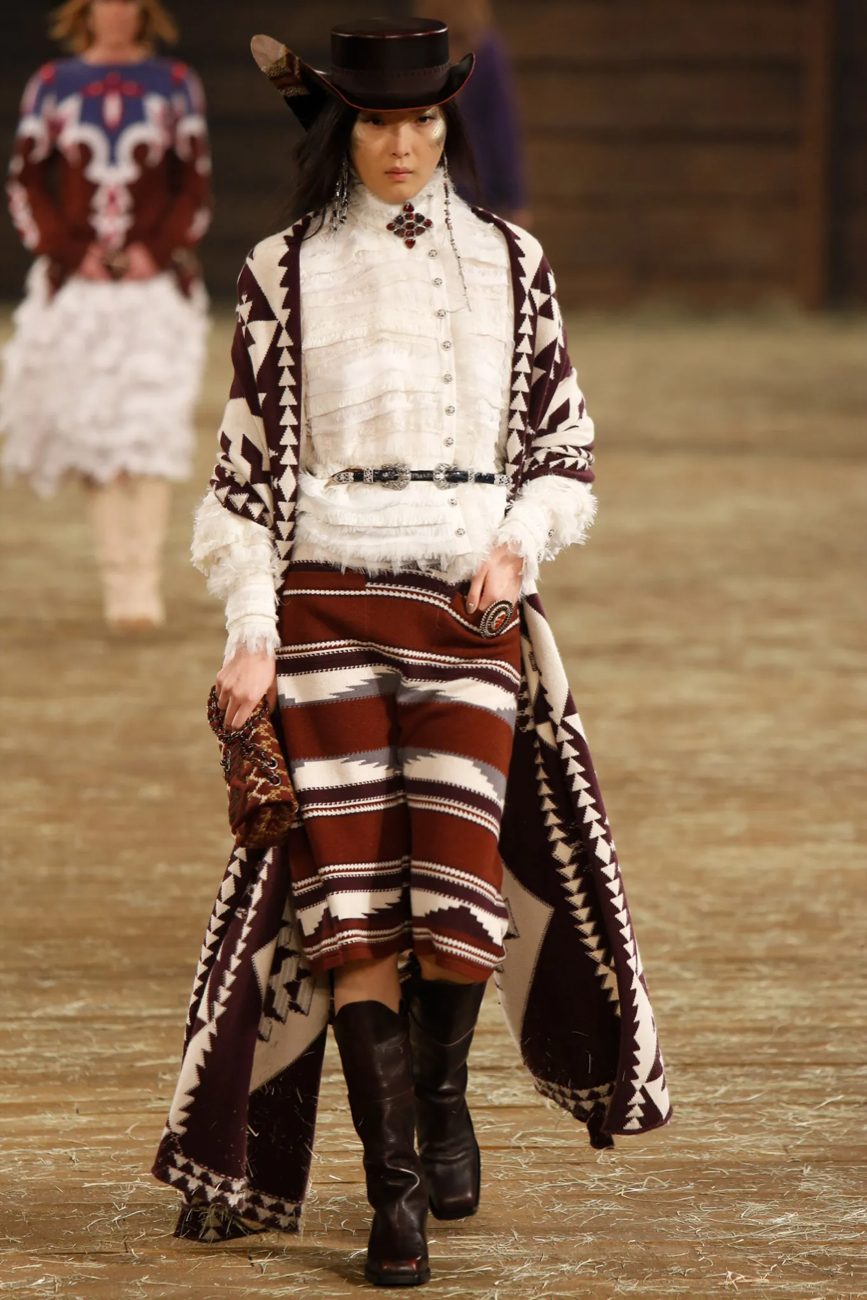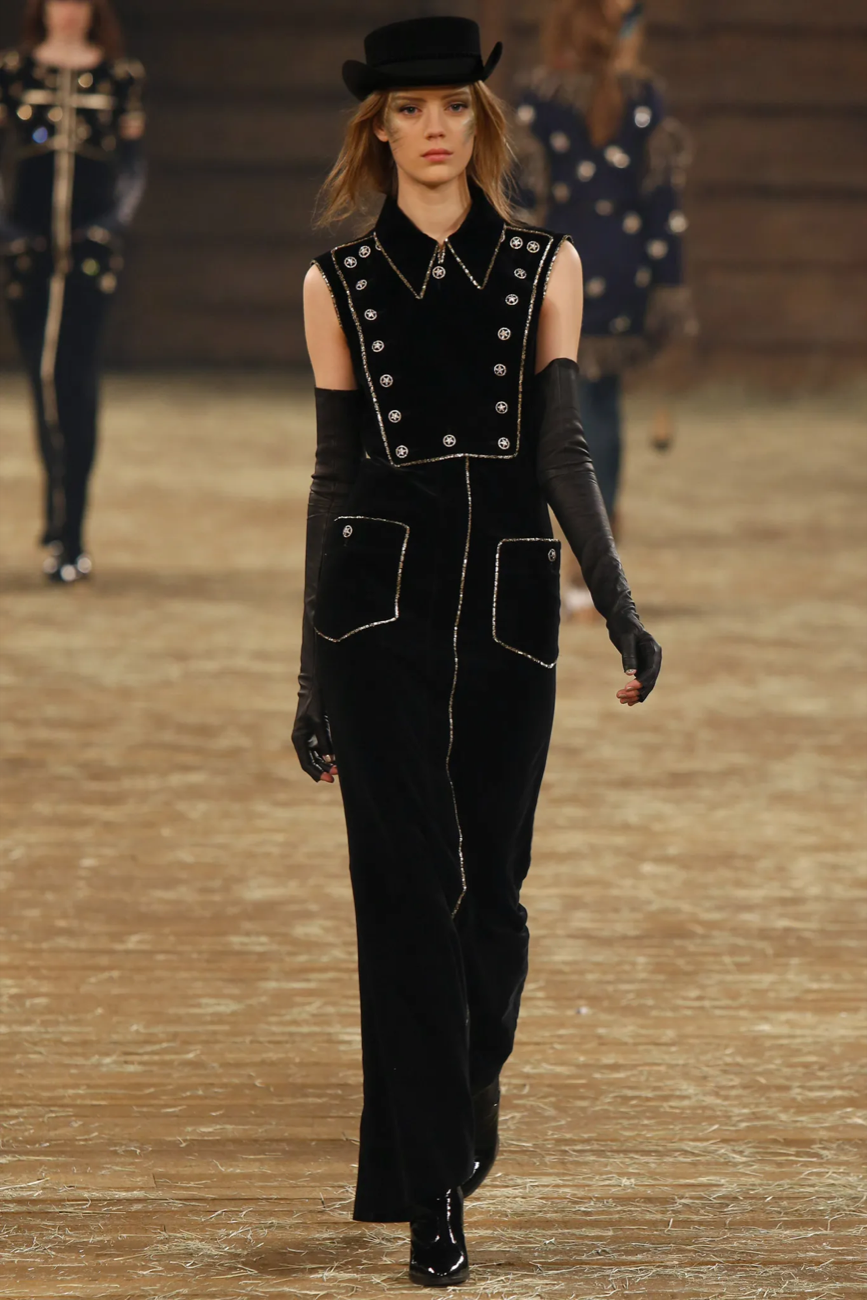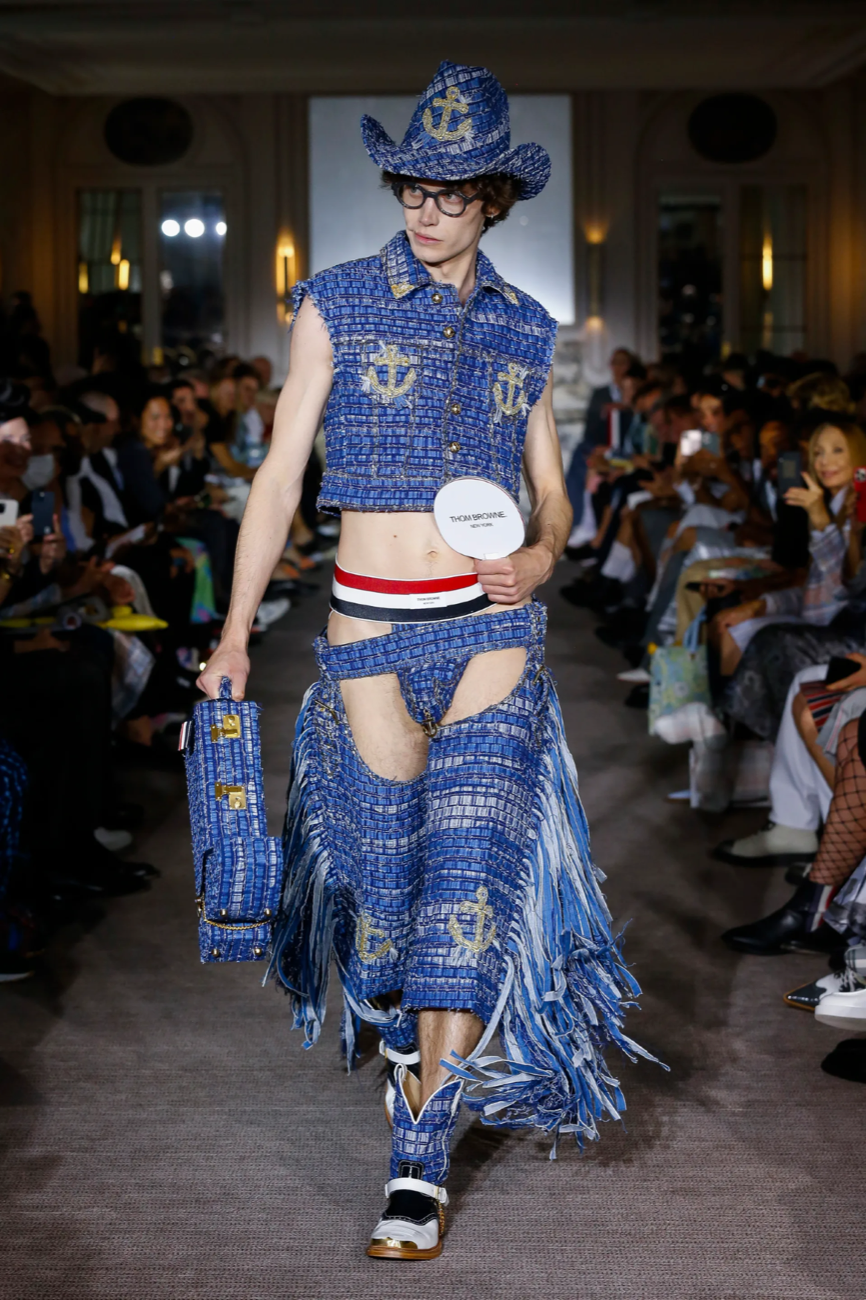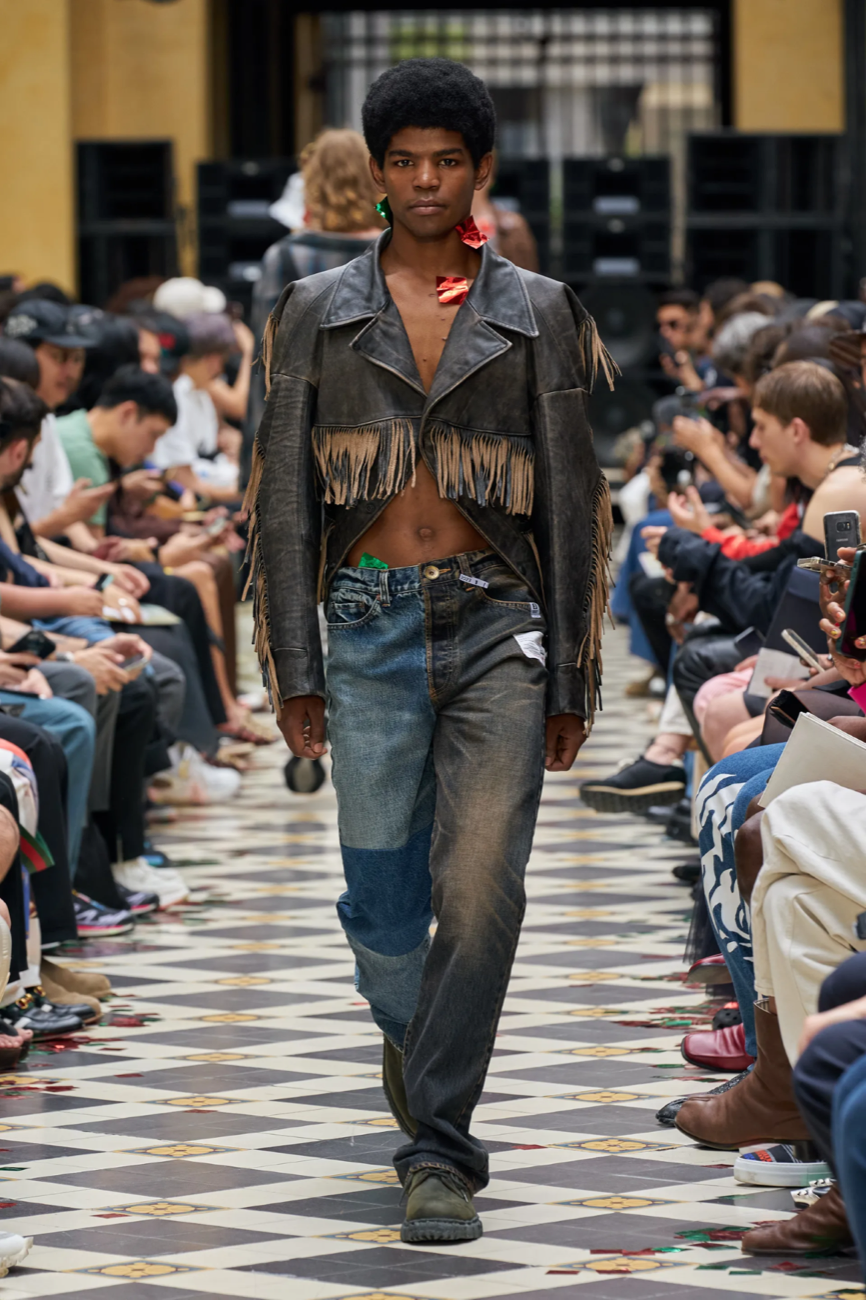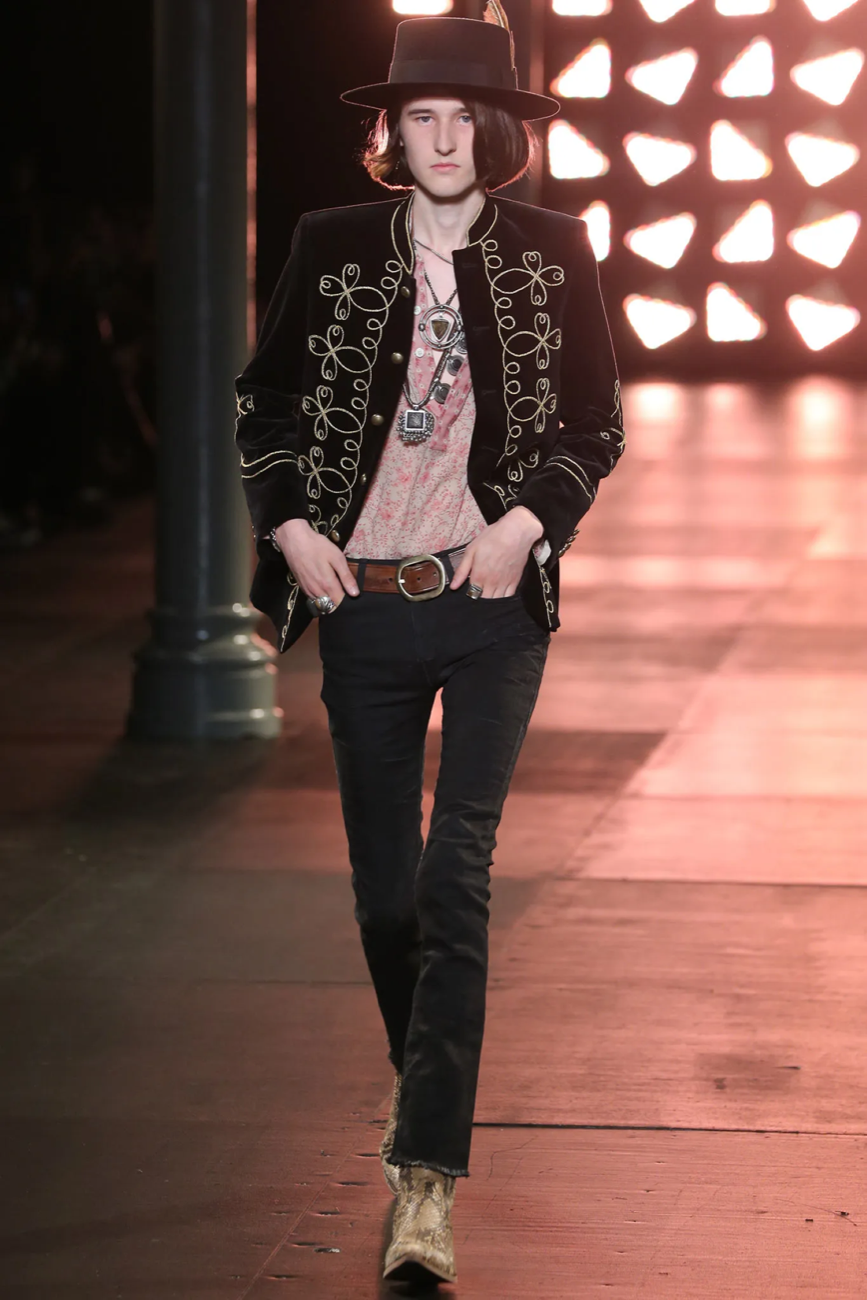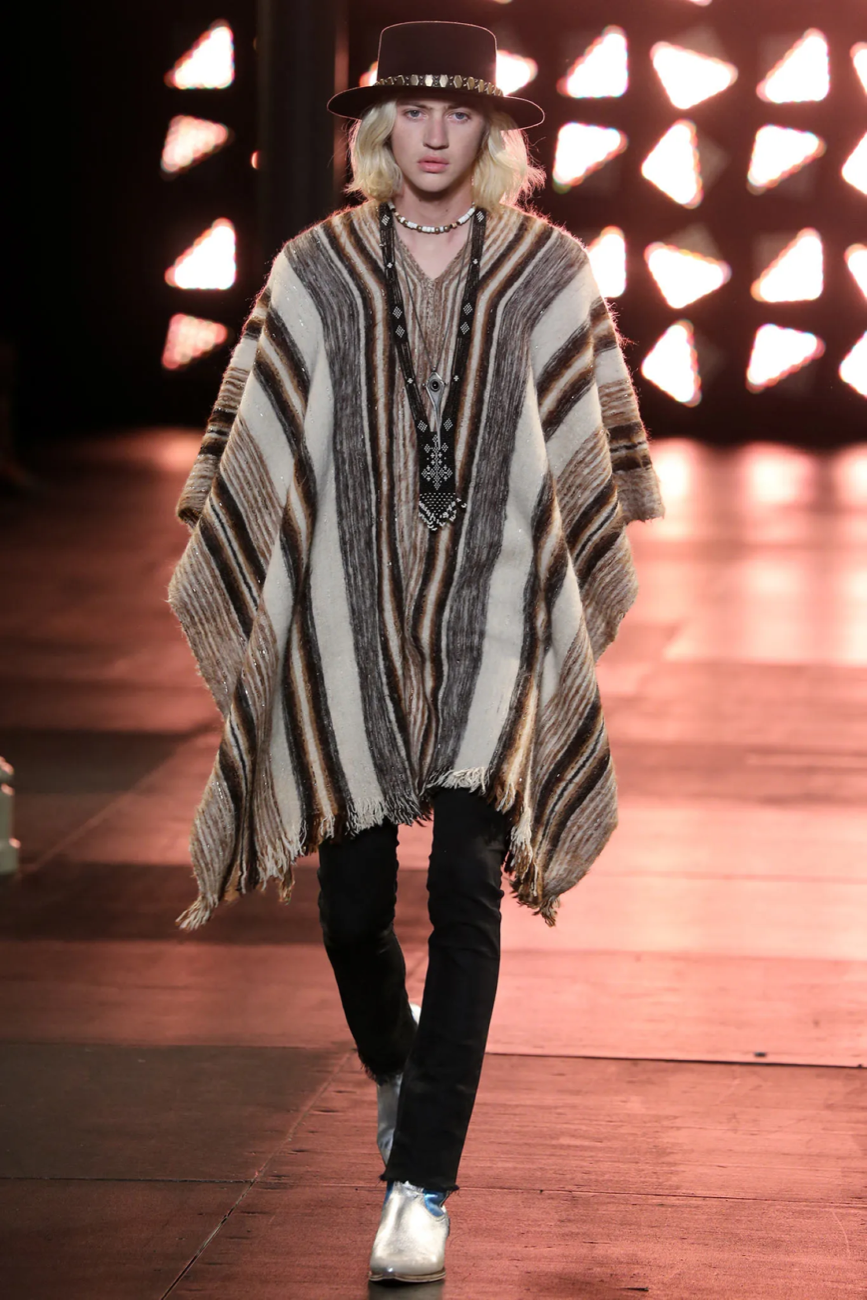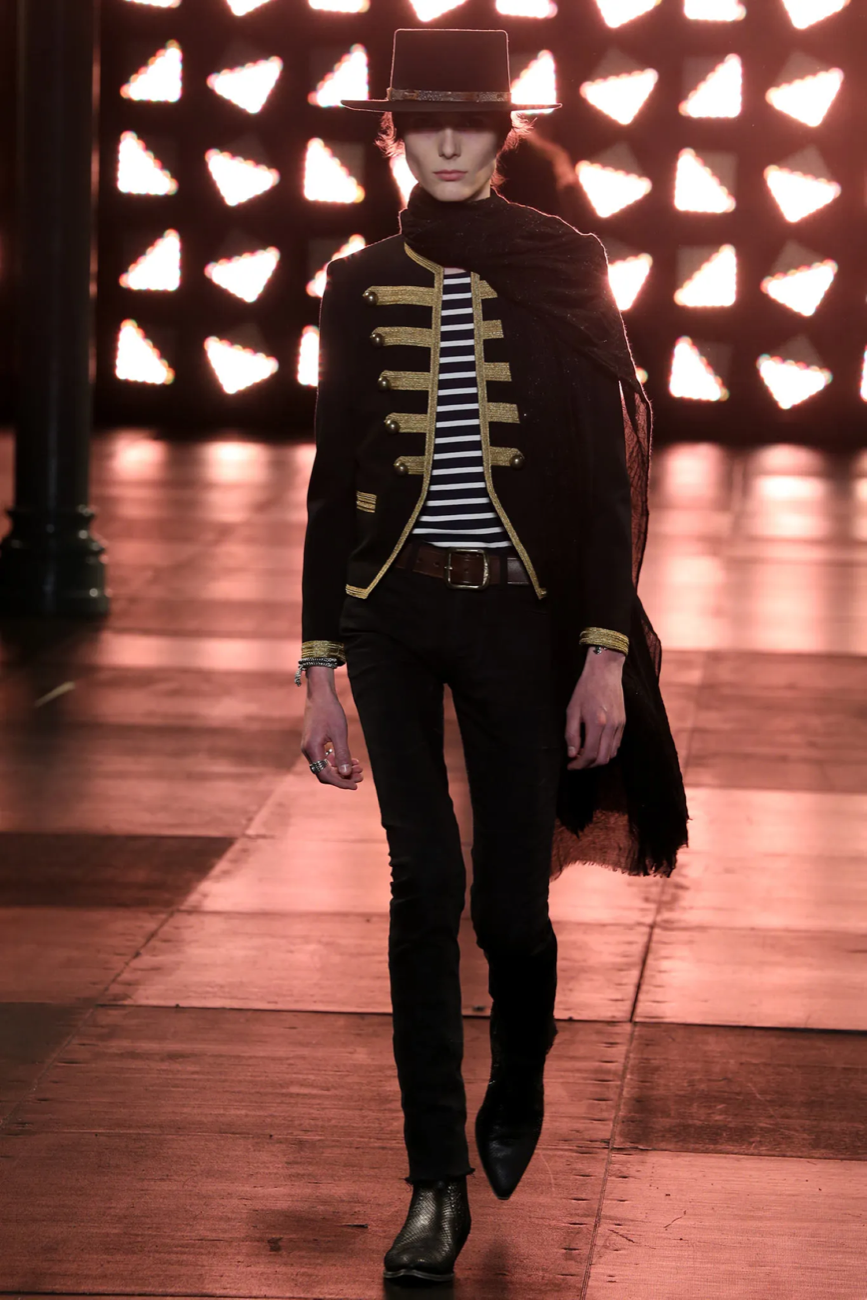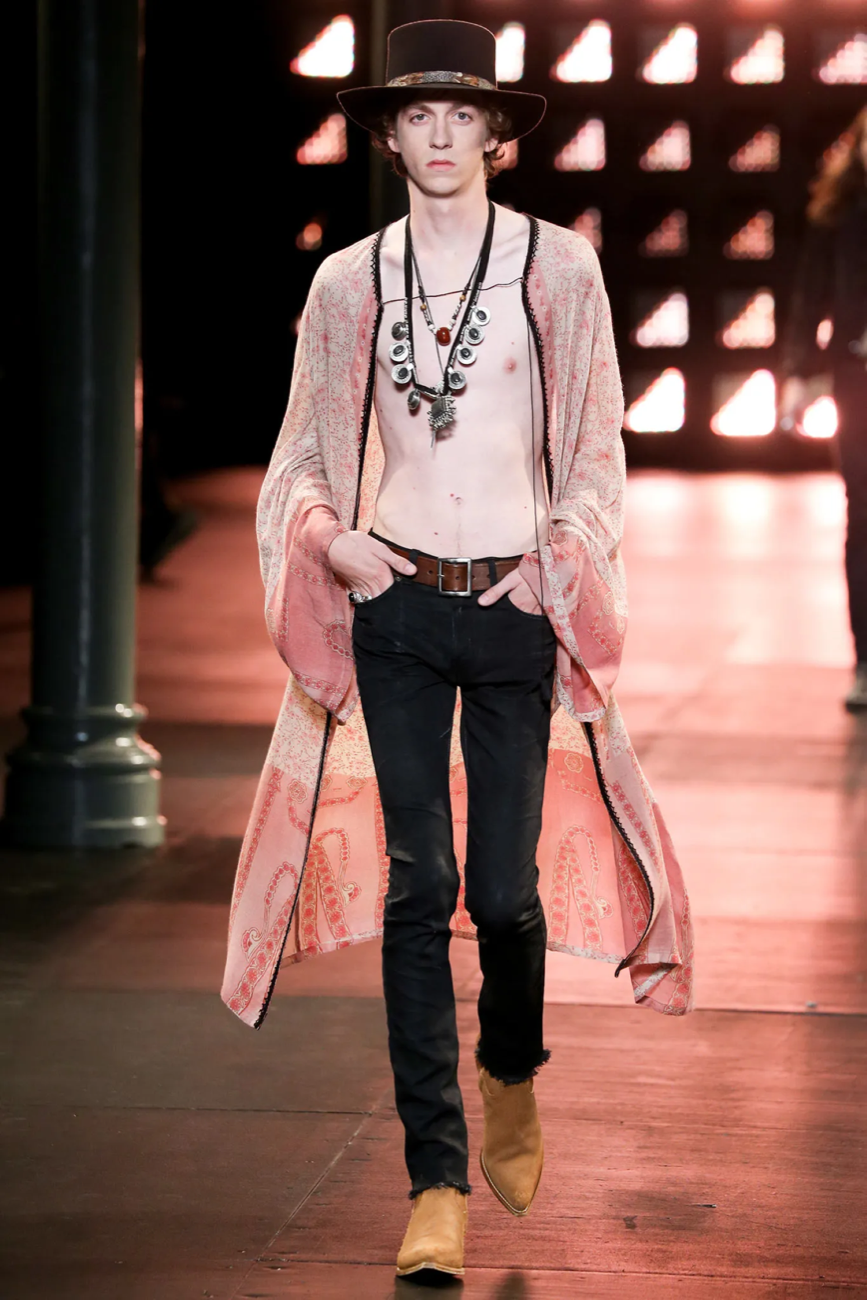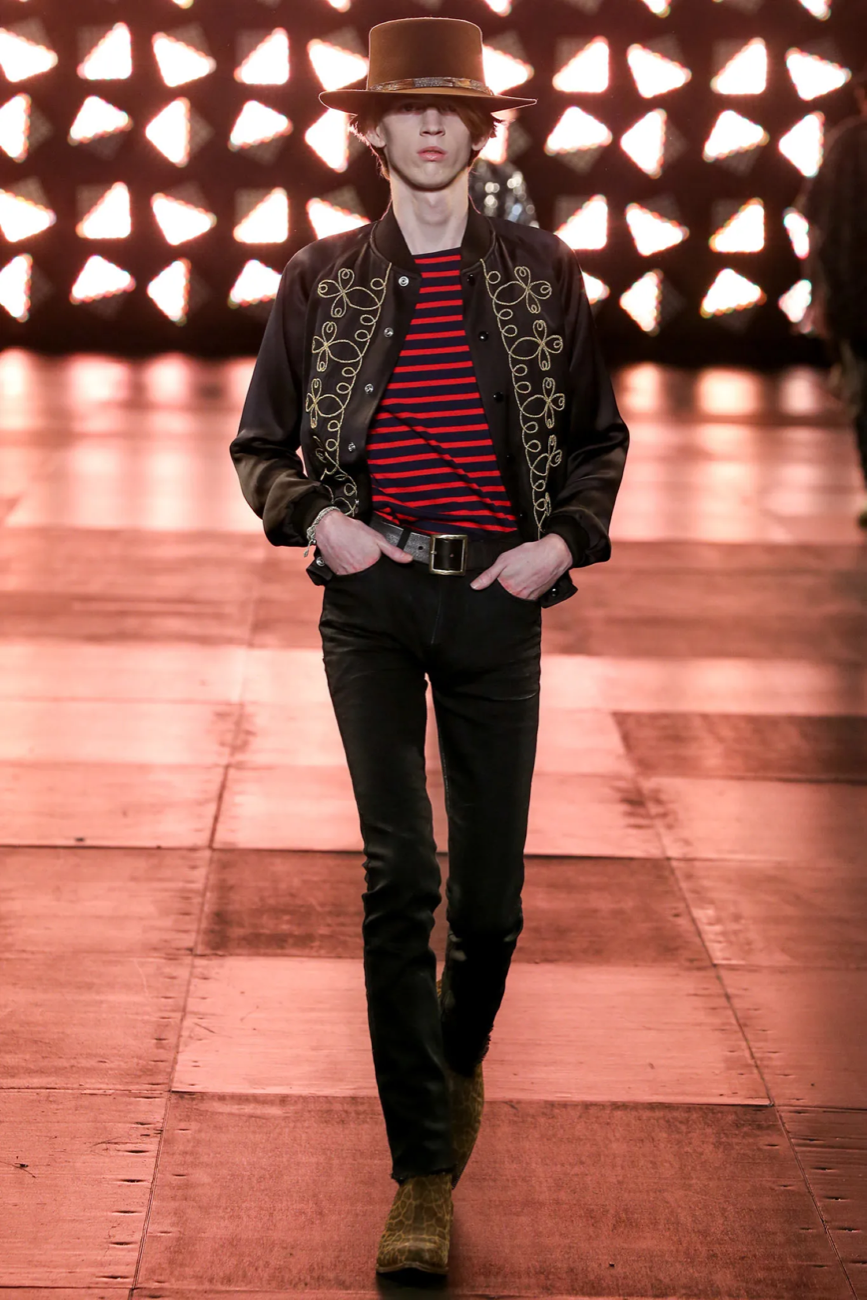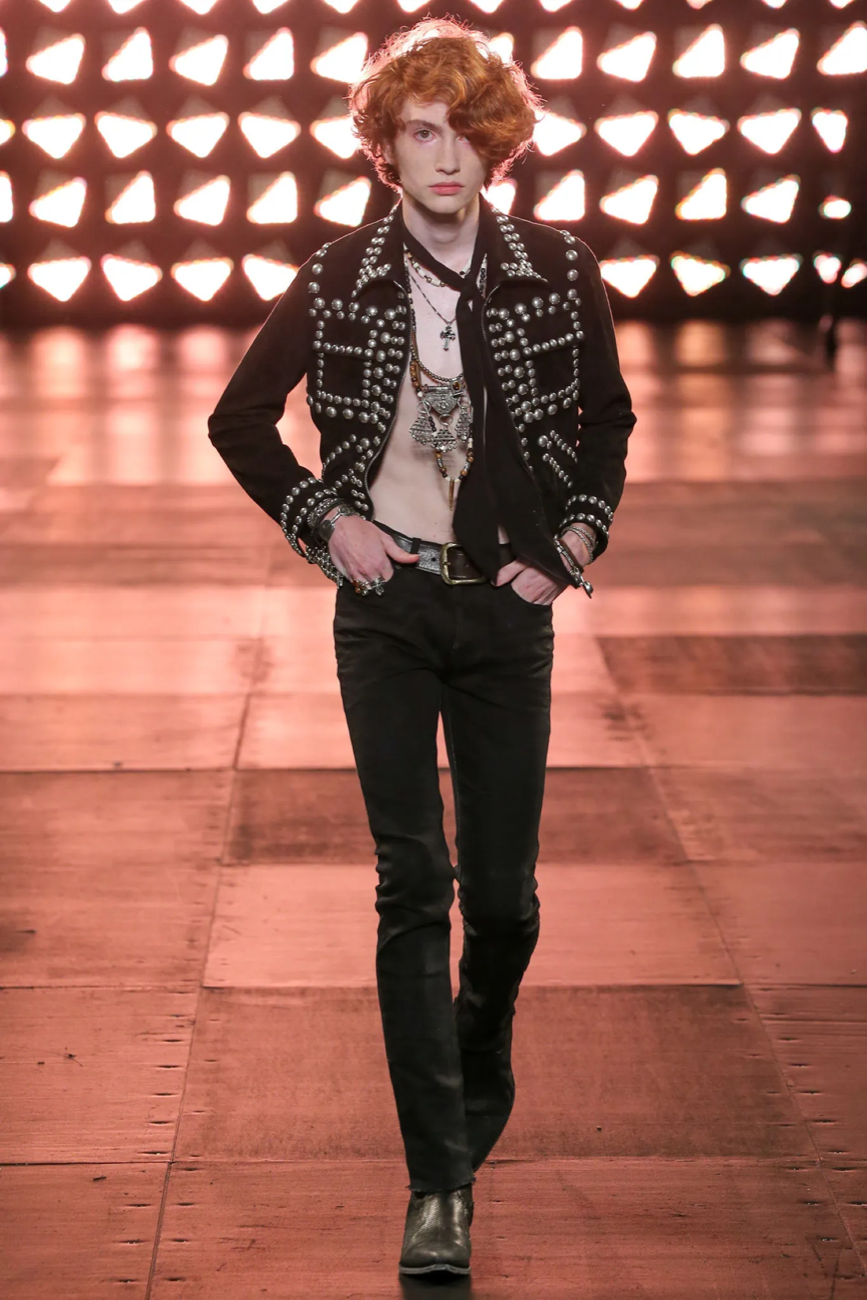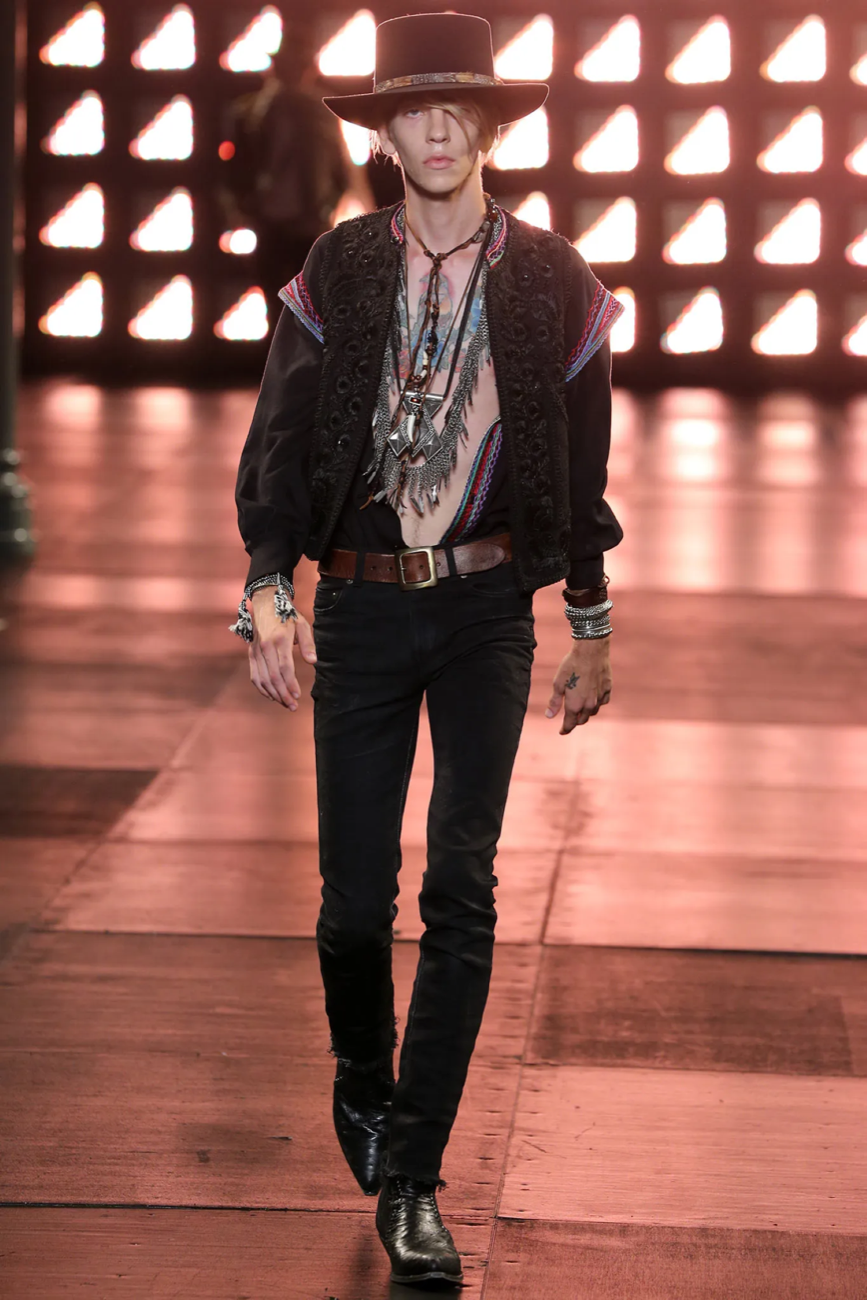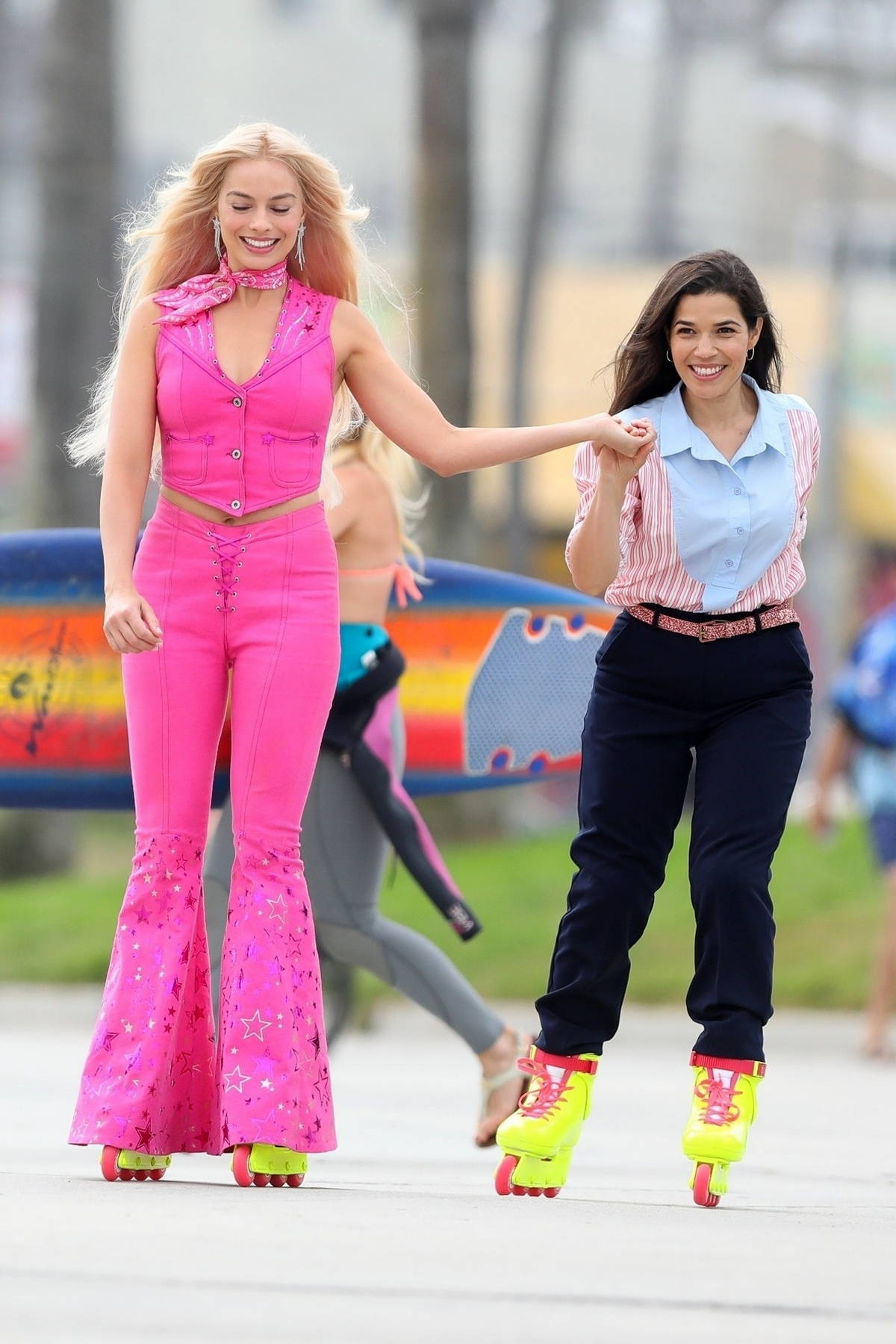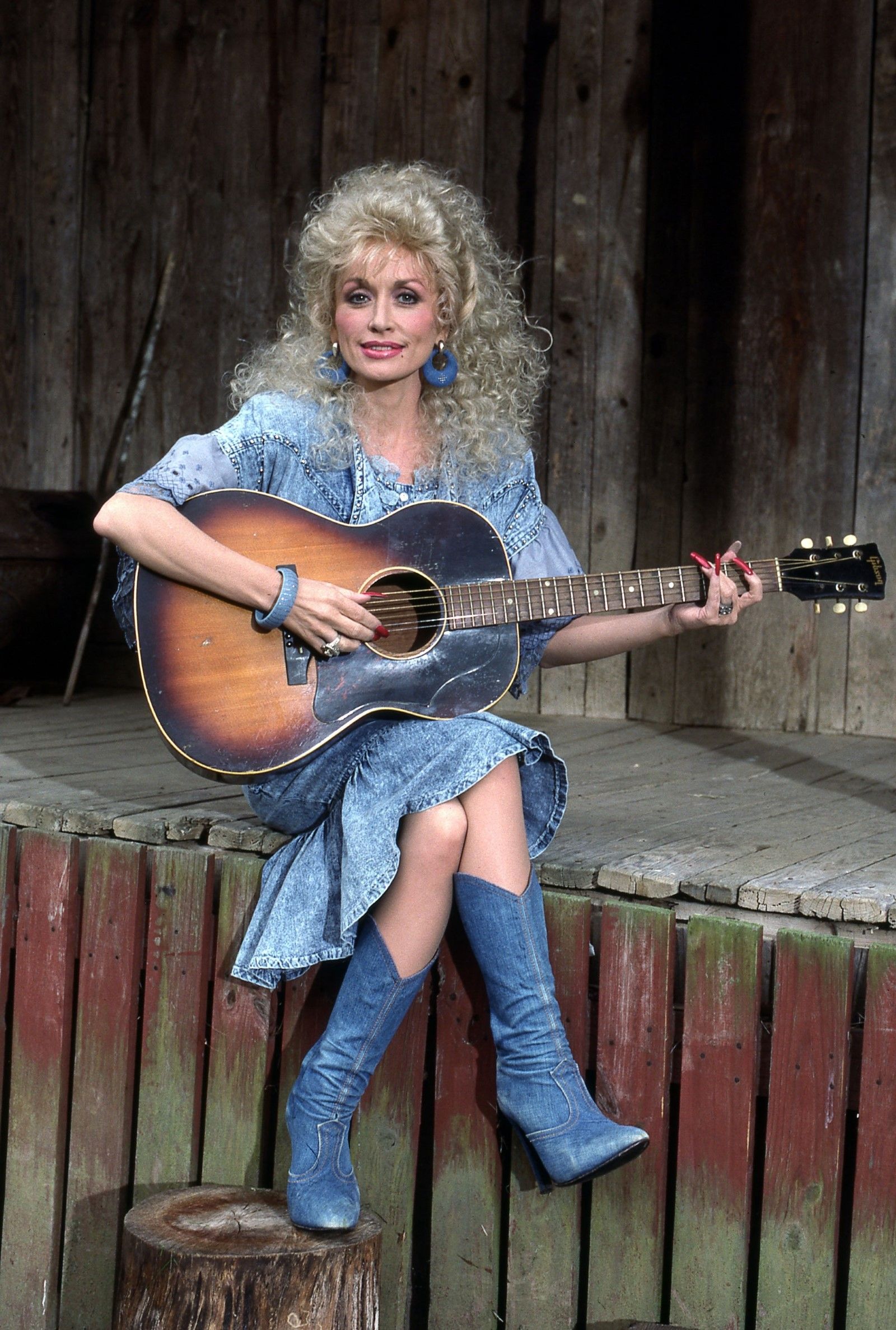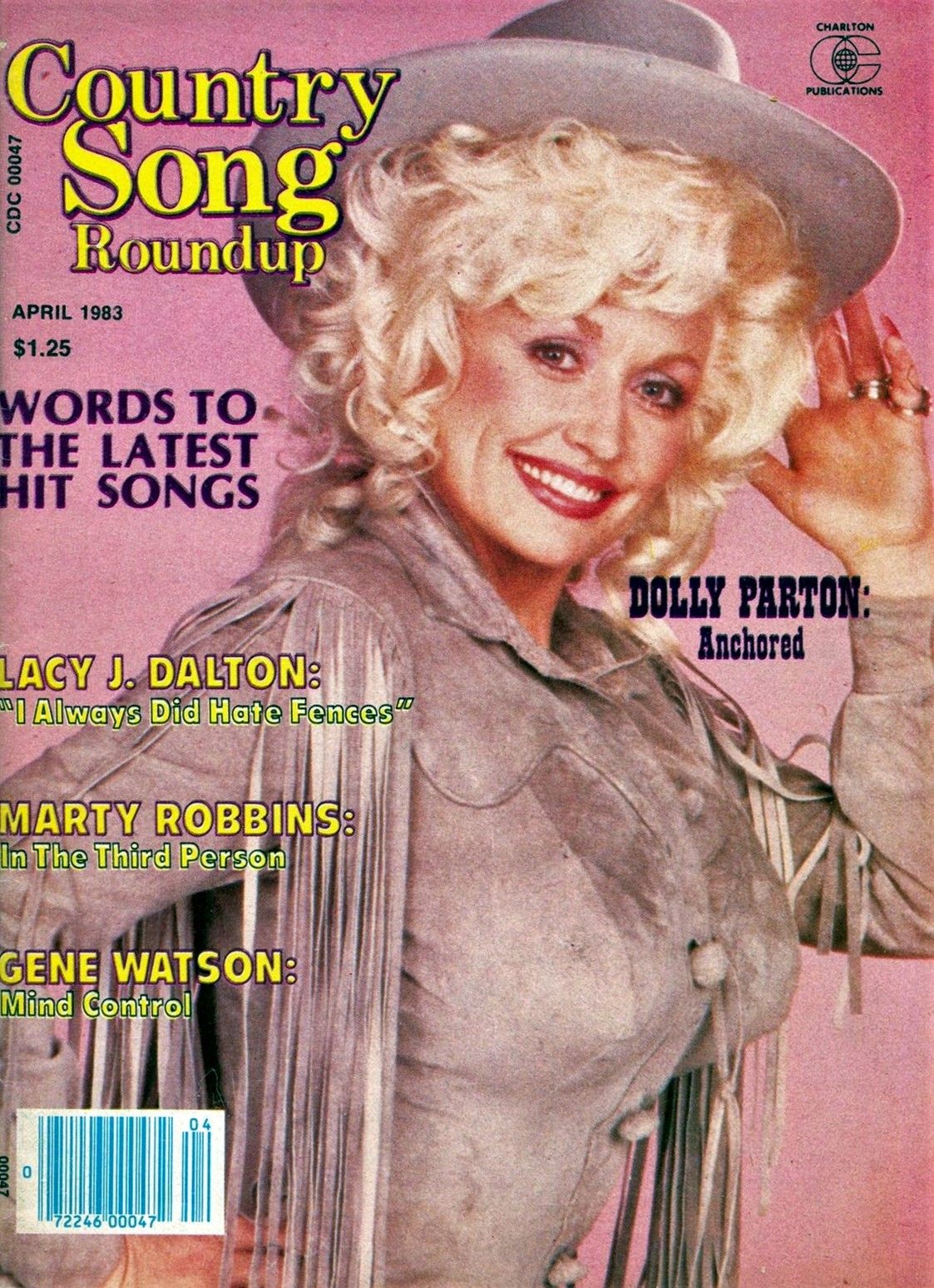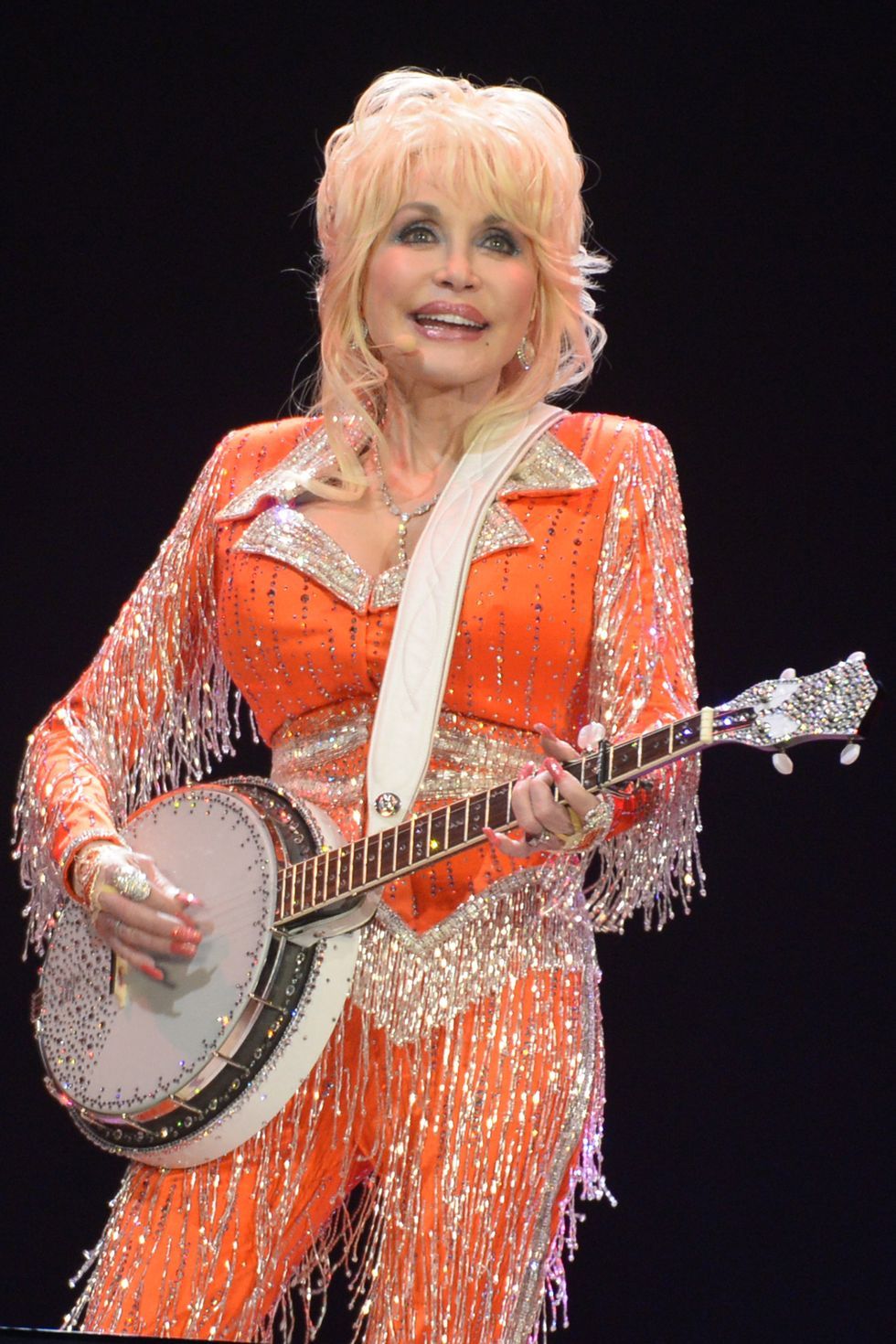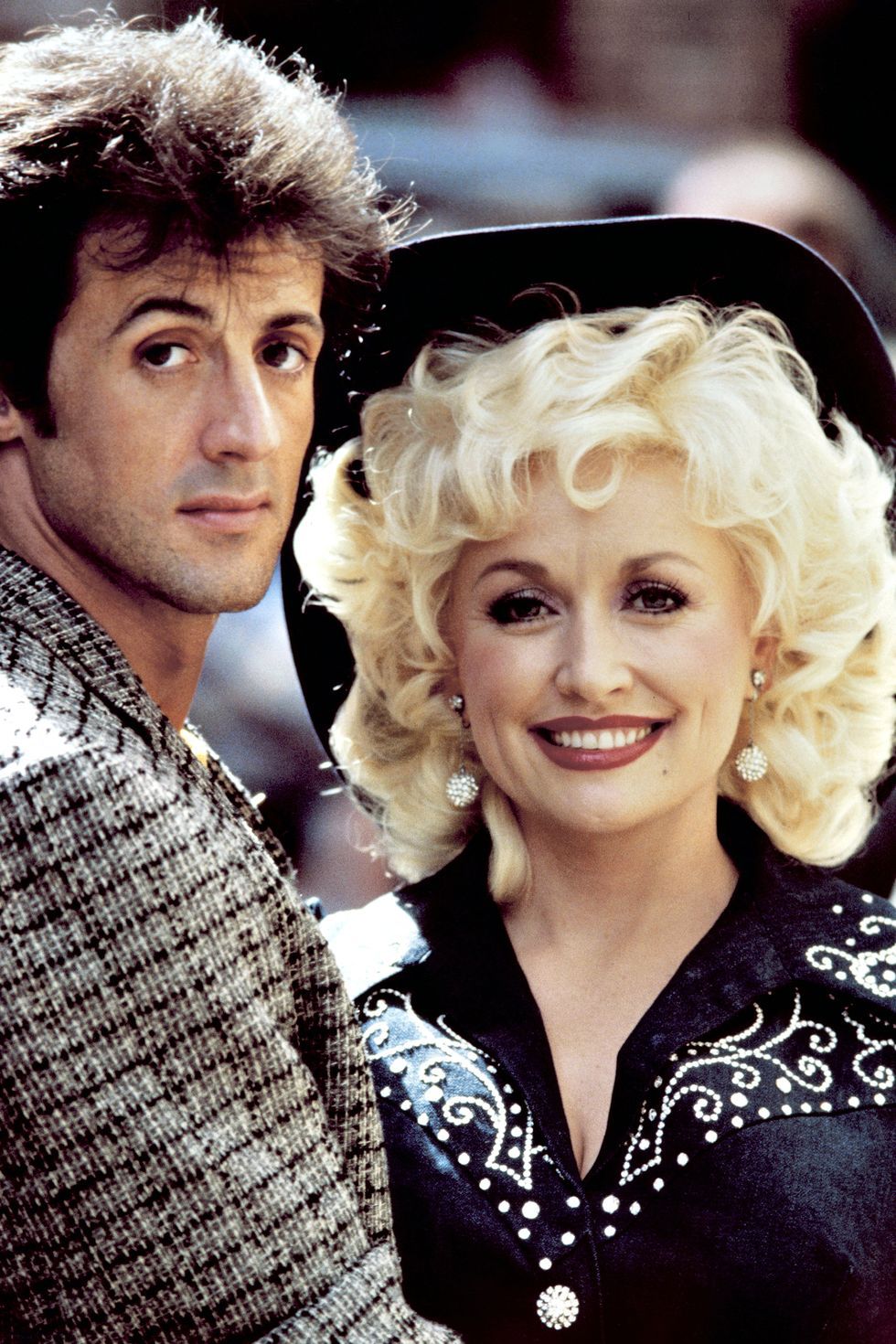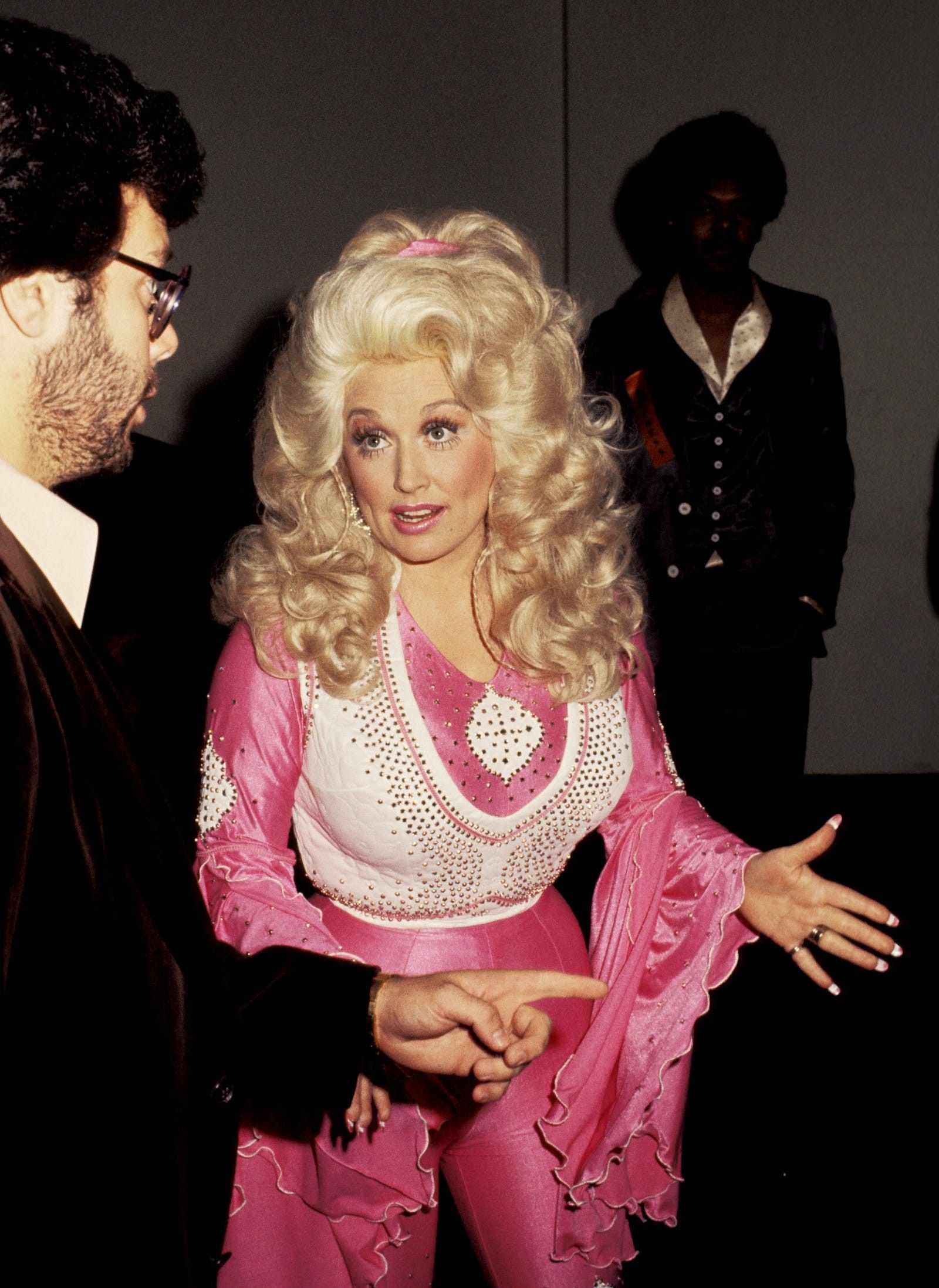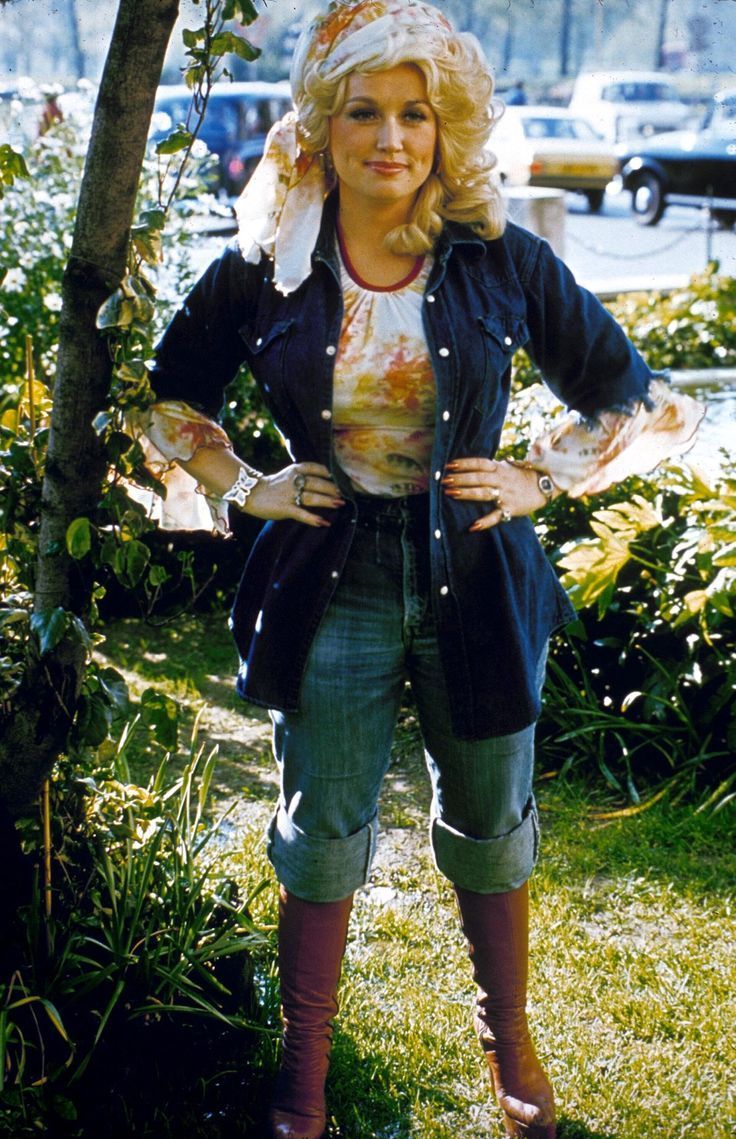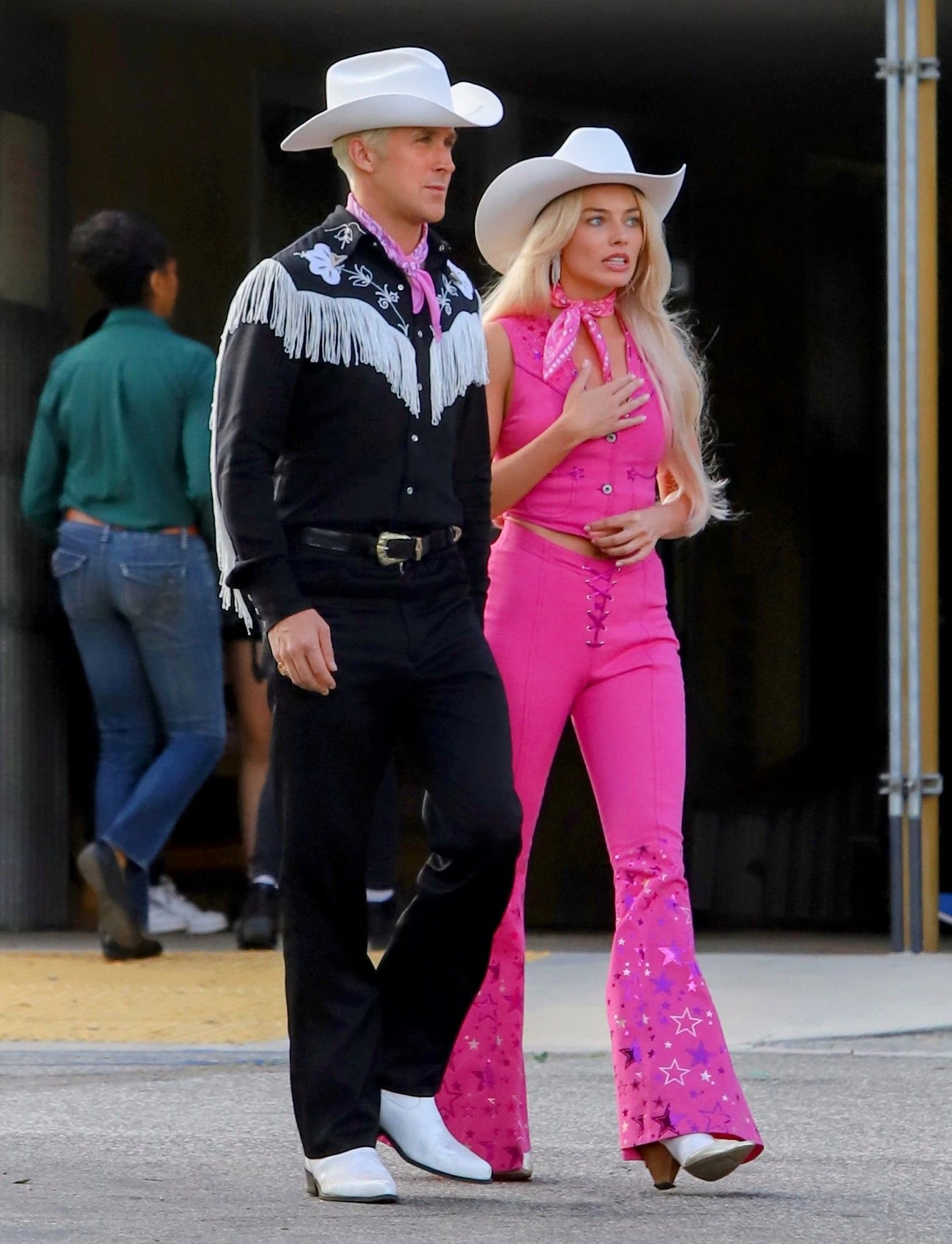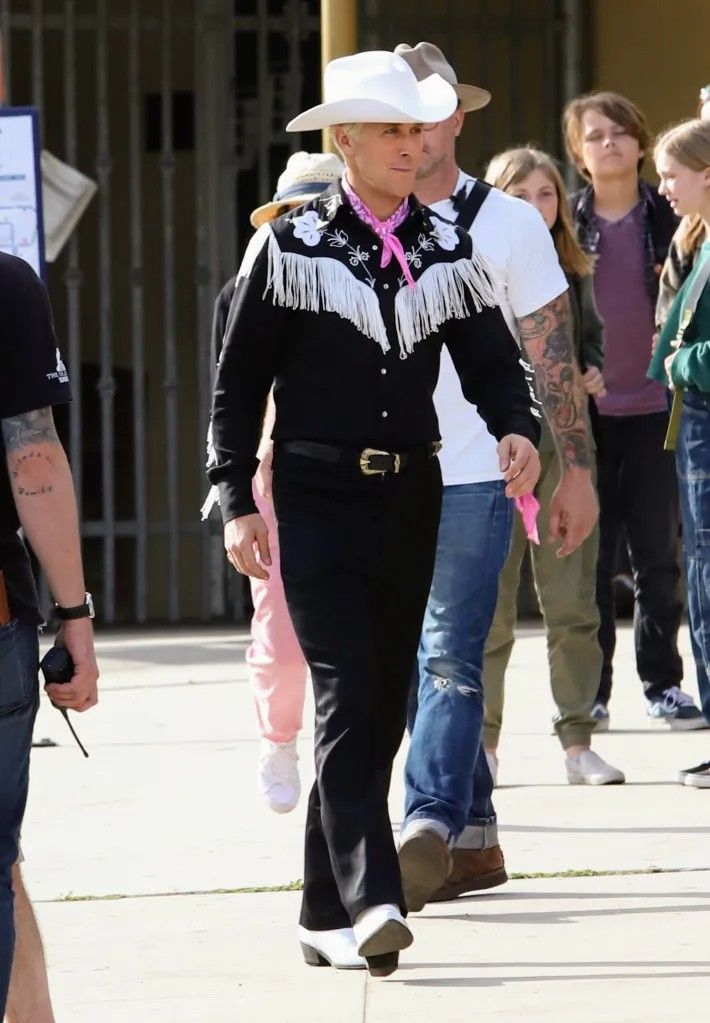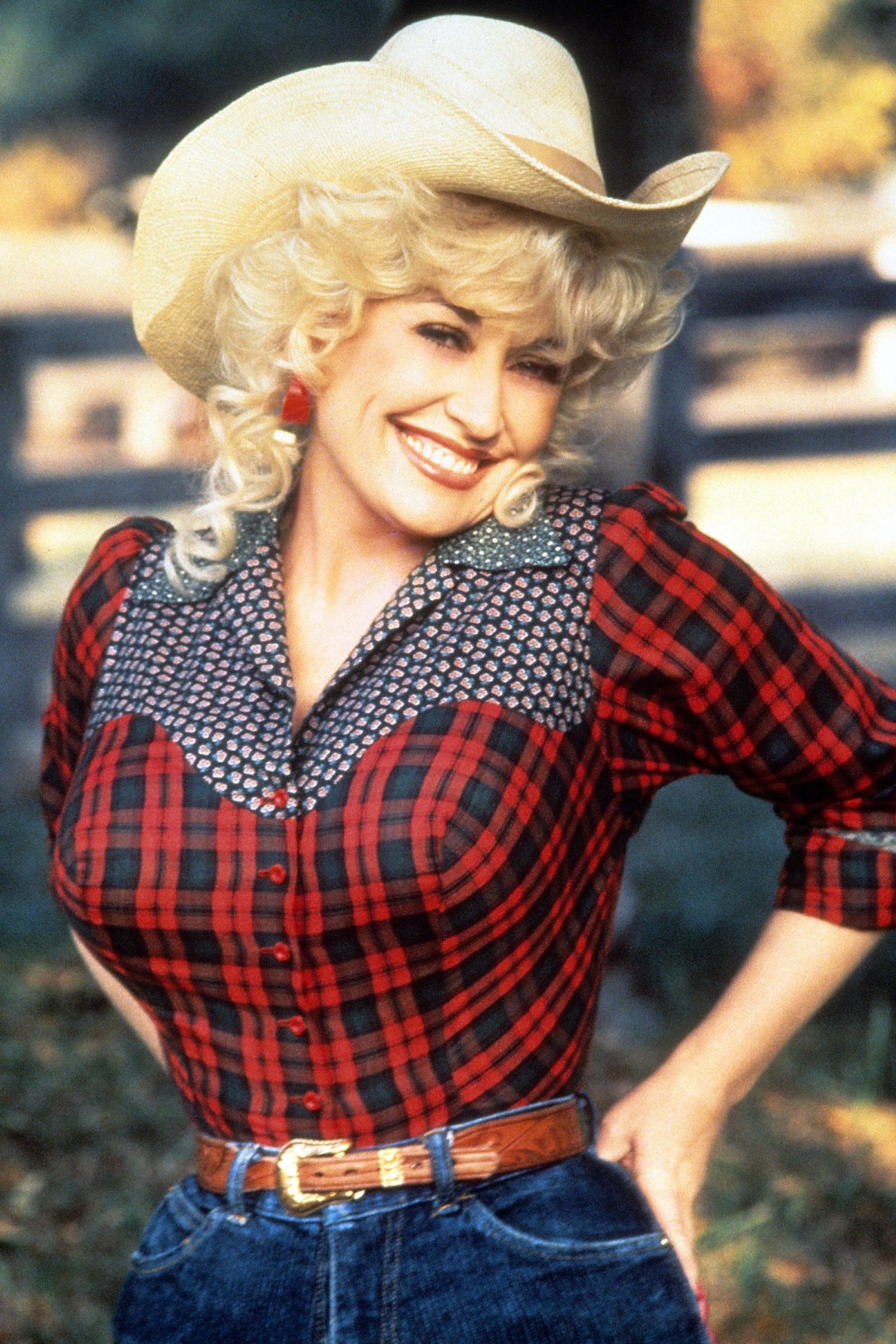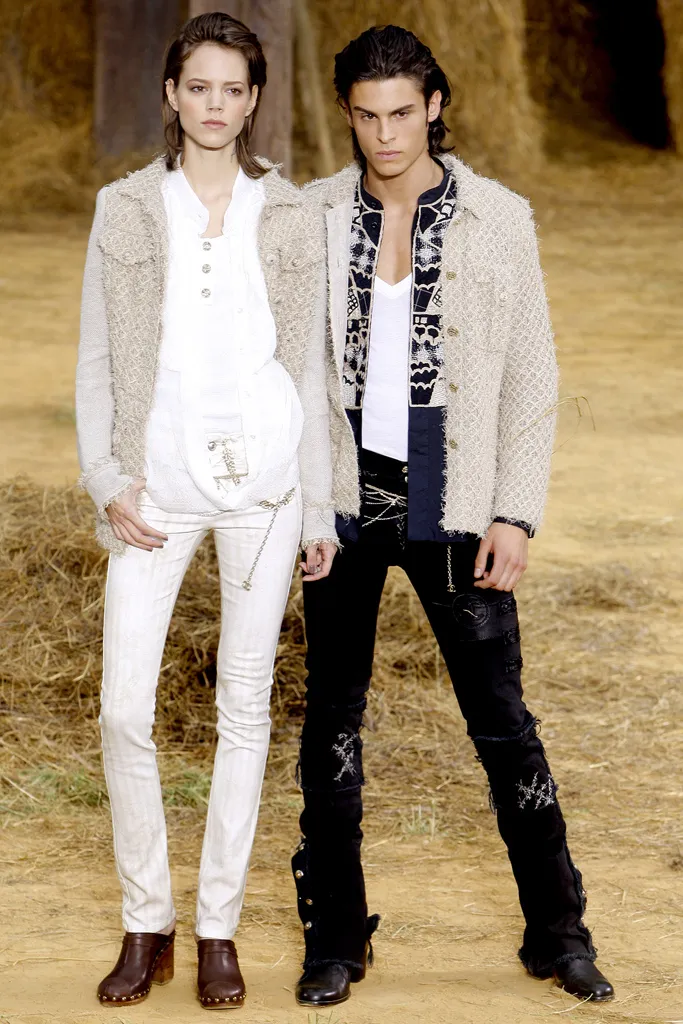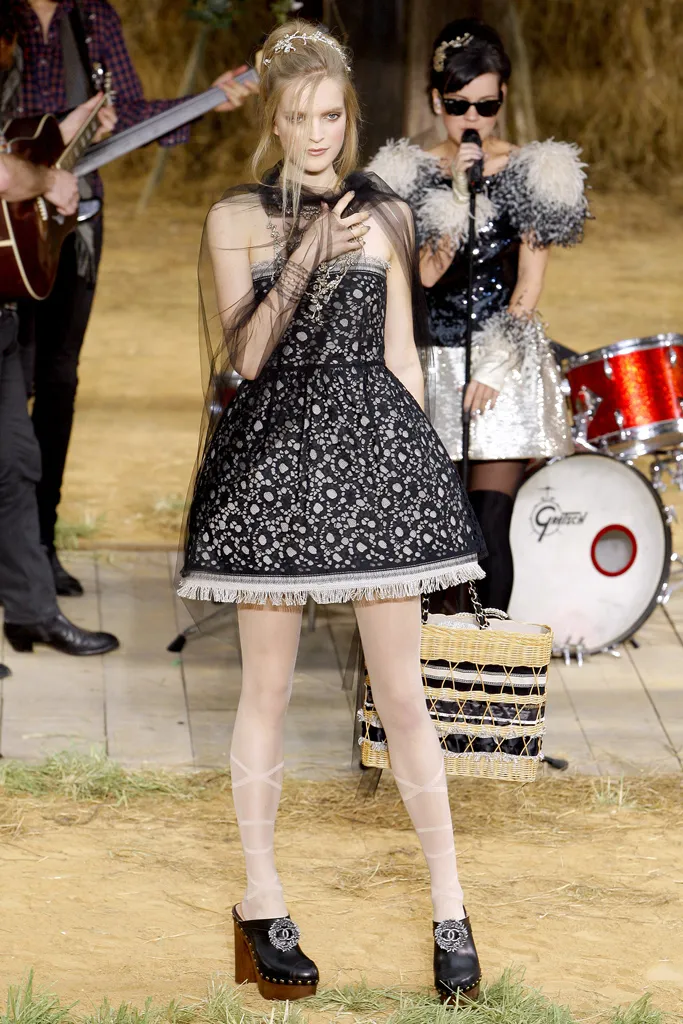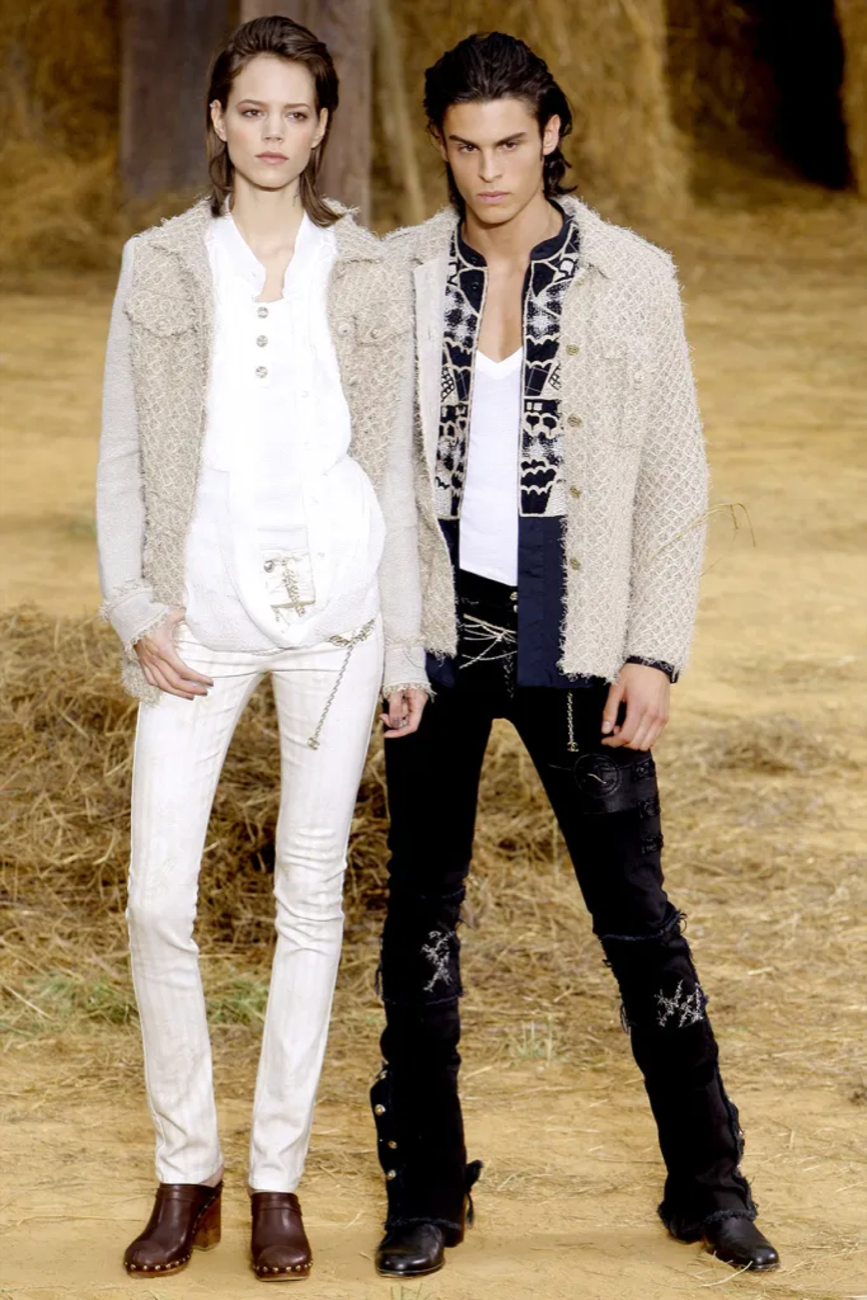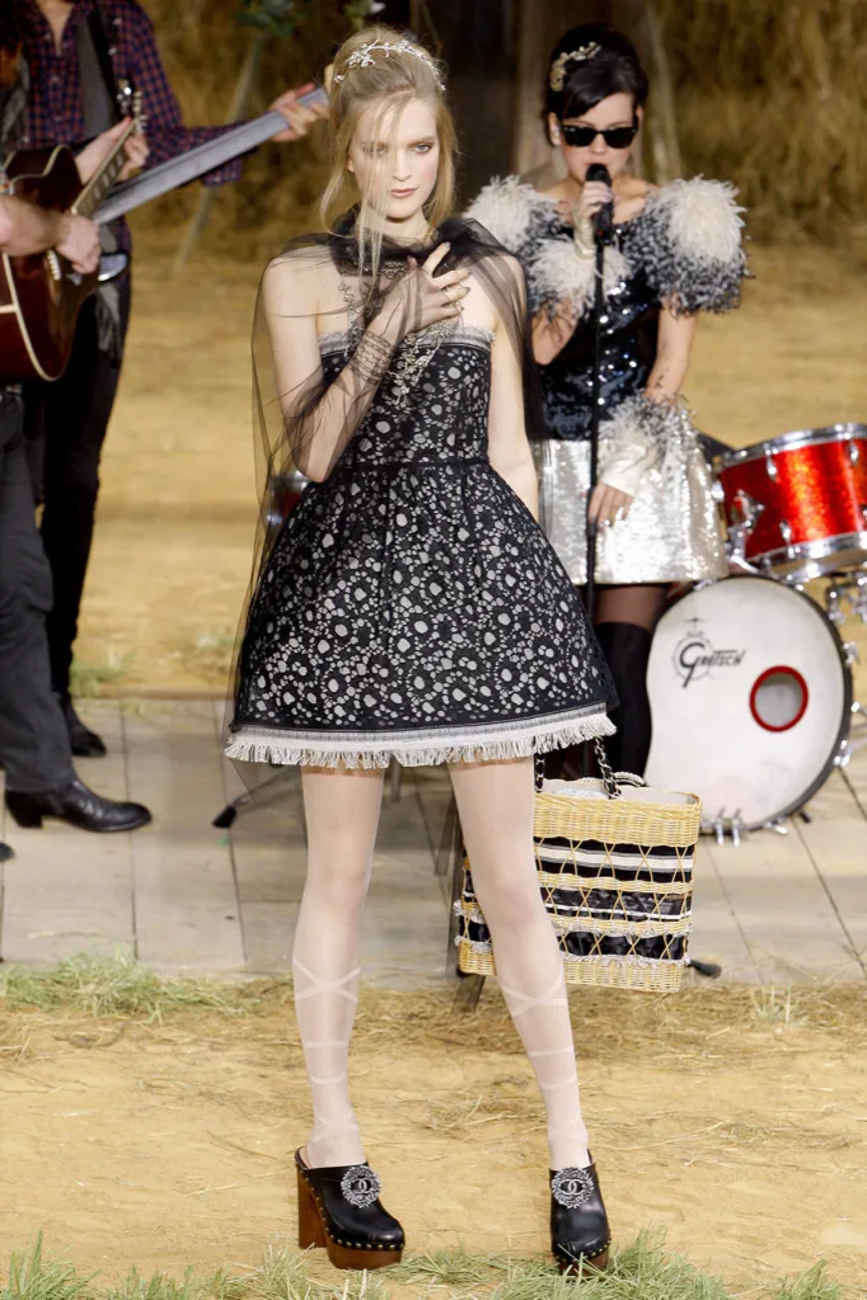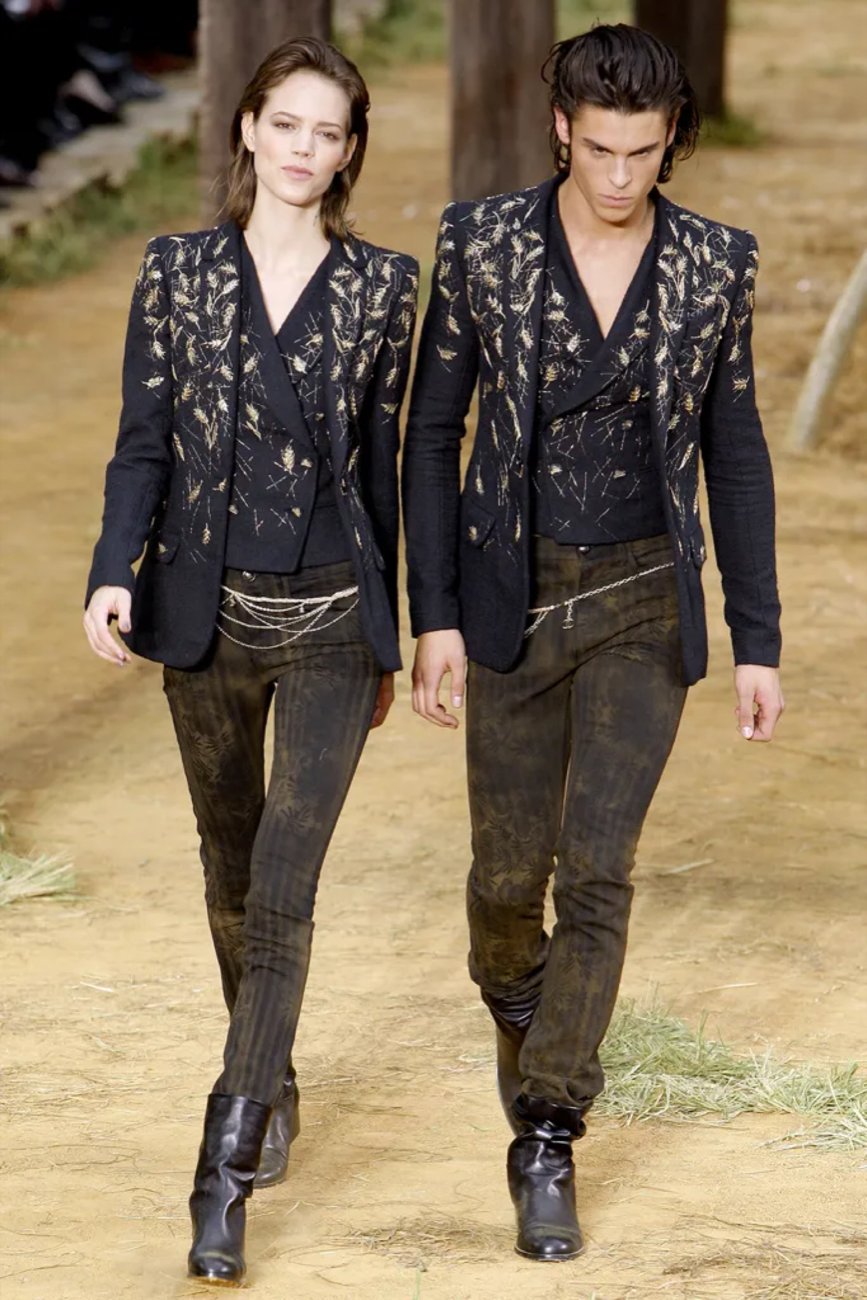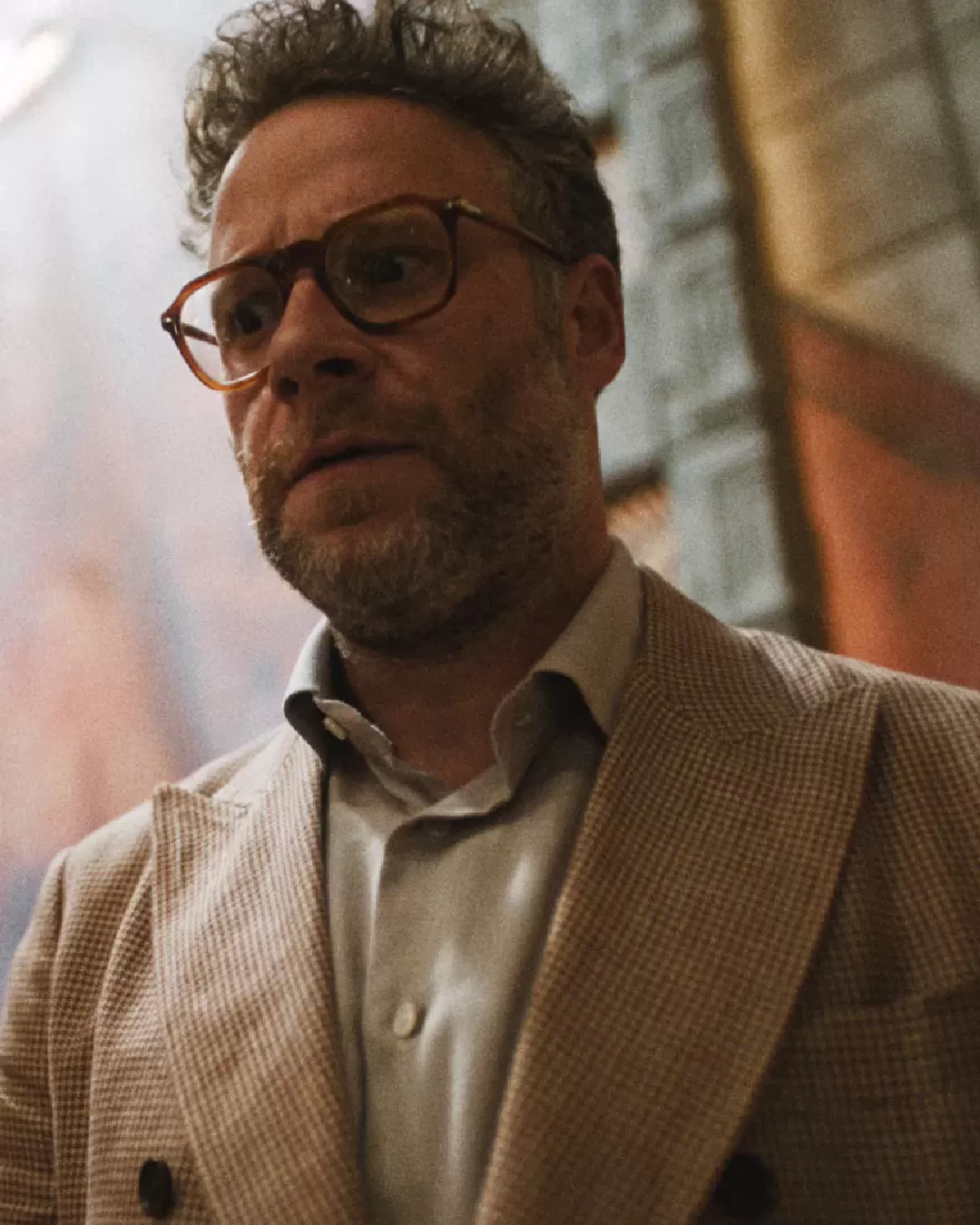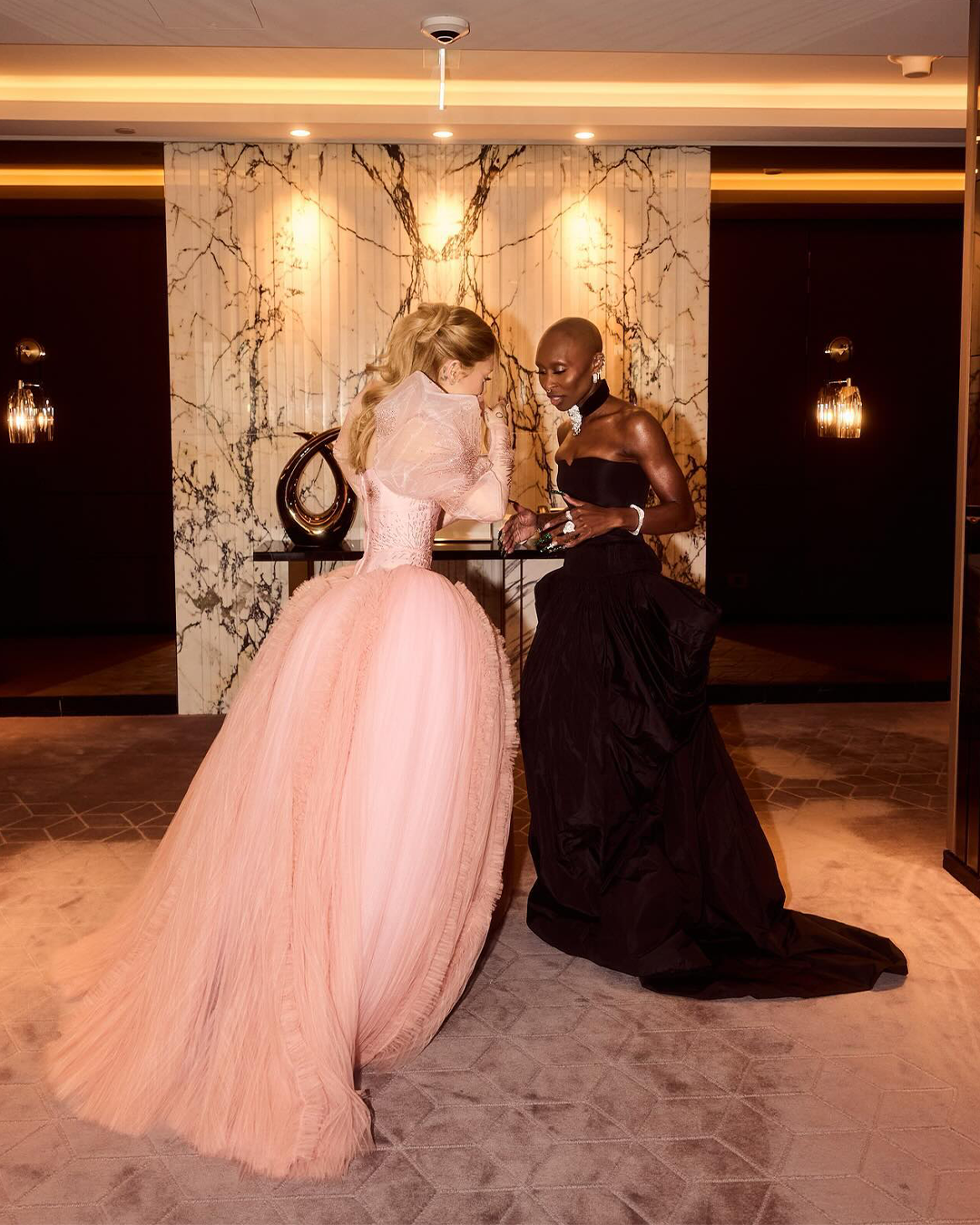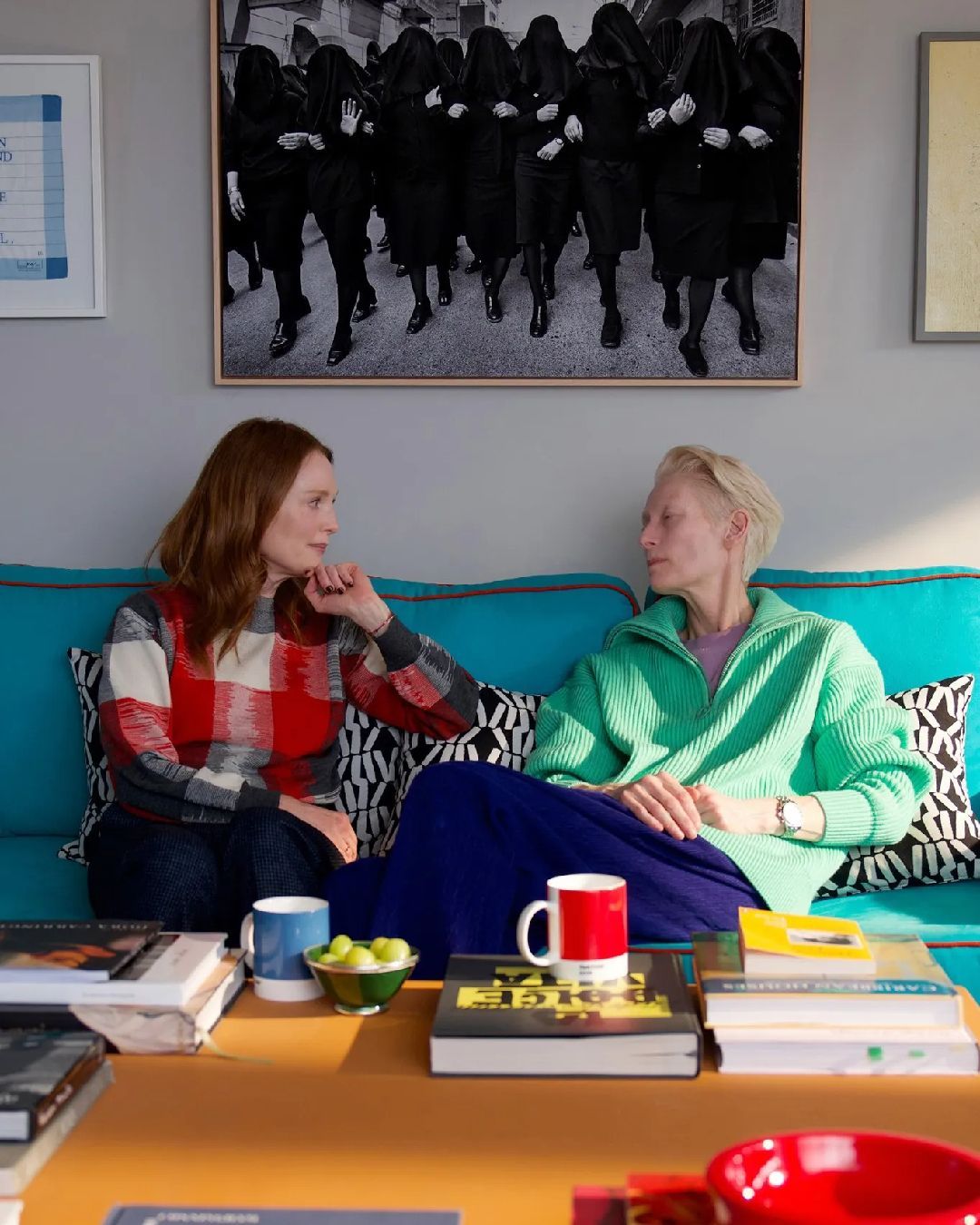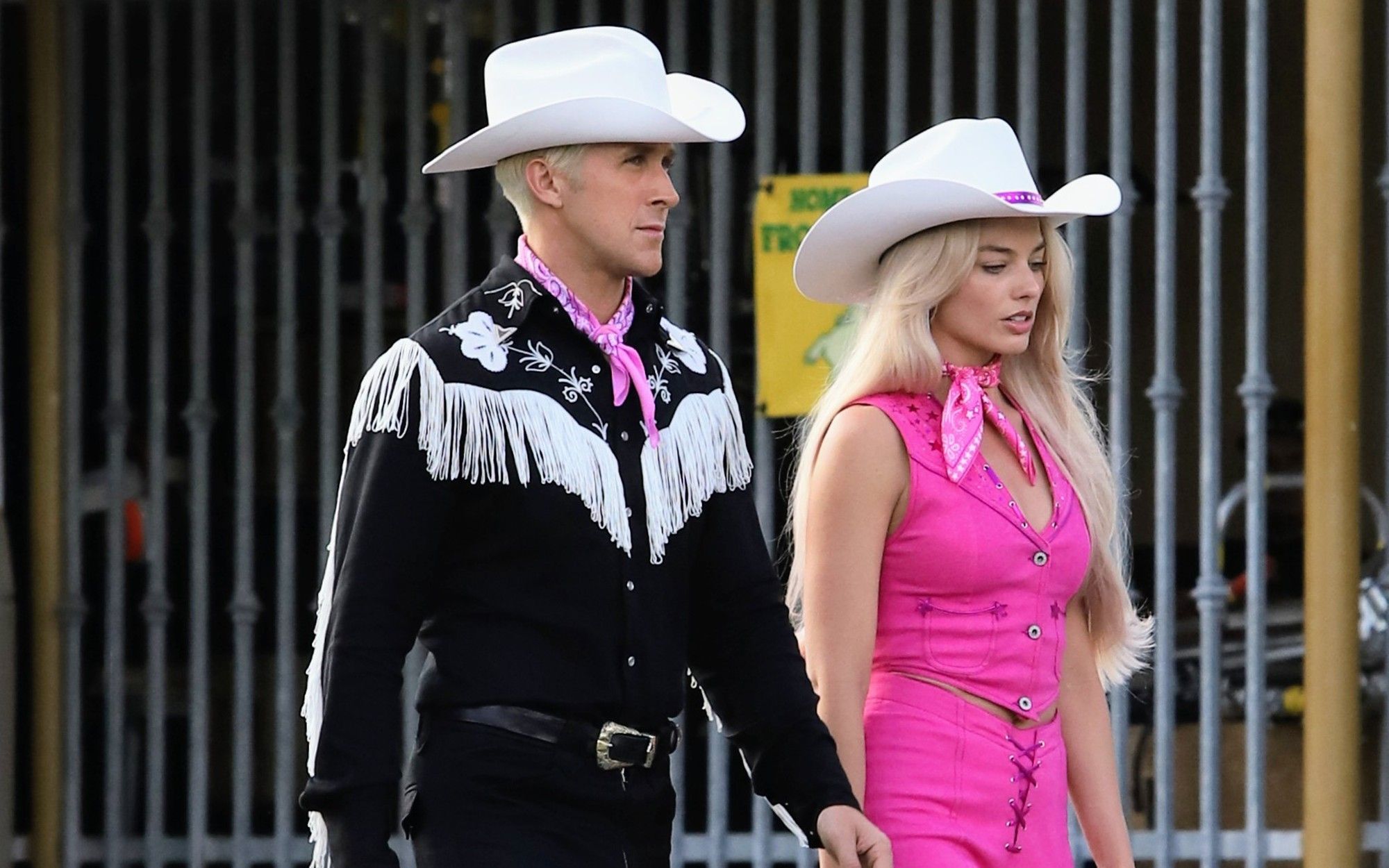
Will the new Barbie movie revive the western aesthetic? Polish up your spurs, y'all
Stolen shots from the set of Barbie, depicting a Margot Robbie and a Ryan Gosling in retro-kitsch cowgirl and cowboy versions, have not been slow to make the rounds of the web. The two blondes starring in the Warner Bros. signed live-action film will bring to the big screen the most iconic declinations of Mattel's fashion doll, accompanying us in an introspective story into the plastic and unbearably perfect universe of "Barbieland." Amidst lamé bangs and iridescent trimmings, the first outfits paparazzied during filming take us back to the "Barbie Gran Rodeo" collection of '81, the country version of Barbie in a cowgirl uniform, with the ever-present bubblegum lipstick and soft braid taming her platinum blond hair. Already a year away from its release, set for July 2023, it seems to want to be based in a particular shocking pink reinterpretation of the Country/Western aesthetic, evoking a cowboy world that has always seduced the fashion world, but beyond its vintage appeal it also has an intricate story to tell.
The rodeo style, which has always been a symbol of bursting masculinity from the days of John Wayne to those of Sergio Leone's spaghetti westerns, acquired a feminine "translation" in the 1980s and camp with the outfits of the world's best-selling fashion doll. But a full decade before Barbie, the blonde doll of the Western style was Dolly Parton: amidst sequins, shocking pink outfits and backcombed hair, the Tennessee country singer swept away the rurality of the cowboy with a series of outfits that romanticized the world of the Wild West, evoking a traditional yet contemporary imagery at once. The designer who created this style, not only for Dolly Parton but also for Elton John, Elvis, and Liberace was Ukrainian designer Nuta Kotlyarenko, naturalized in the U.S. under the name Nudie Cohn, who created virtually all the fringe- and crystal-encrusted Western outfits of the 1960s and 1970s, leaving a legacy that reaches to this day with the work of Hedi Slimane and Alessandro Michele. With plaid blouses and generous necklines, Miley Cyrus' godmother managed to channel her signature style within the pop universe, expanding a sexy aesthetic, then confined solely to men, to women.
In fact, until the 1950s, being a cowboy had always been synonymous with hard work, intense physical performance, and economic hardship, in a context of rural life and country landscapes light years away from today's western-glamour imagery, as can be witnessed through John Wayne's thousands of interpretations. From the 1960s onward, the figure of the cowboy reached the height of popularity by revolutionizing its image with the spaghetti westerns, a popular transposition that painted a harsh and sometimes brutal world far removed from the idealized American West. The Western aesthetic captured both the traditional menswear imagination, and witness the incredible success of Clint Eastwood's and Sergio Leone's "ugly, dirty, and bad" Westerns, and the camp aesthetic of American country artists who instead declined its forms toward baroquesque forms made of embroidery, crystals, and bright colors with lineages that reach all the way to the present day - such as the style of Lil Nas X.
As the camp imagery materialized, from the mid-1960s onward, the underground scenes witnessed a revival of the western style through the early LGBTQ+ communities, which eradicated the assumptions of toxic masculinity through a new, drastic, and unabashed attire. Already in its later evolutions in the 1950s and 1960s, with films such as Rio Grande, the western had become an ornamental version of itself, a romantic and adventure musical quite distant from historical reality. The sexual revolution of those years, as illustrated by Susan Sontag in her Notes on Camp, was under the banner of kitsch and parody. Alongside Art Nouveau-style décor and histrionic make-ups, all those distortions of working-class male uniforms, including that of the cowboy, made their way into Camp's sights. Accomplice to this was a film in 1971 that anticipated the context of The Secrets of Brokeback Mountain, causing a stir and excitement among viewers. Zachariah directed by George Englund revolves around the friendship of two young cowboys who a little later would be called the "antiheroes" of Western cinema. Between messages of peace and sentimentality, Zachariah was the first film in history to arouse critical interest around homosexual issues, which had never before been publicly debated in a newspaper. From then on, country aesthetics began to acquire unexpected twists, first dictated by prejudice, then merging with the style of street centaurs, giving rise to new subcultures related to homosexual imagery.
With the new century, the word "cowboy" has finally managed to earn a permanent place in the fashion world, leaving behind its various kitschy references and provocative clichés. Between Chanel's outfits inspired by House on the Prairie in the Pre-Fall 2014 fashion show, and the cowgirls "who can't do without bows" in the SS10 collection, Karl Lagerfeld had his say on the western aesthetic through jaunty and hyper feminine proposals. Inspired by California style, Hedi Slimane, on the other hand, made the cowboy one of the main suggestions for his reinvention of Saint Laurent, preferring an androgynous and sophisticated approach that overrides all gender preconceptions: it was during his tenure that the Wyatt boot was created, in which that boho-losangel style made of wide-brimmed hats, bangs and bootcut jeans was introduced.
His revolutionary stylistic work generated a unique and unrepeatable language that permanently grafted the codes of Western aesthetics into the language of contemporary menswear, exporting it from its original American fashion culture and romanticizing the connections it had with surfing, rock, and in general with that imagery of reinvented masculinity typical of Slimane's work on subcultures. The Wyatt boot, for example, was not a huge novelty in itself but it had the merit of condensing together Western culture and mod and rock suggestions by taking the sole and heel typical of cowboy boots and grafting them onto the classic English Chelsea Boot - thus Slimane convinced hundreds of thousands of men to wear heels without even realizing it. And if the cowboy boot redesigned for Celine, the model is called Jacno, remained present until Celine's last Paris fashion show, three of Slimane's most emblematic collections stand out in Saint Laurent's SS15, with leathers, amulets and fine fabrics elevating the cowboy style to an unmatched concept of luxury.
We also witnessed all this during the men's catwalks of the last fashion weeks, where the country trend manifested itself through garments and accessories that broke away from the idea of the classic cattleman and approached a fluid and precious context, much closer to Ken's outfits. First and foremost were the chaps, short for "chaperreras," the gauchos' overpants that, from the mid-1970s onward, became one of the main accessories of the leather and BDSM subculture, as well as a key symbol of sexual liberation. From the "Gay Rodeos" of the 1980s to the lace chaps worn by Prince in '91, indeed, the step was short. Elevated to the utmost power by Jean Paul Gaultier, chaps today were the stars of Thom Browne's latest fashion show, in their highly erotic denim version, but also in the psychedelic ranch at SS23 in Casablanca, edged with bucolic-taste embroidery and paired with matador outfits. A taboo accessory with a controversial history thus returns to lay down the law on the fashion system's most admired runways, annihilating the ridiculing prejudices that for decades have encircled the cowboy aesthetic. And although transgression, in fashion terms, now seems to have speculated in every imaginable context, the figure of the outlaw cowboy will forever remain a bewitching style proposition, an emblem of rebellion and nonconformist style.










































